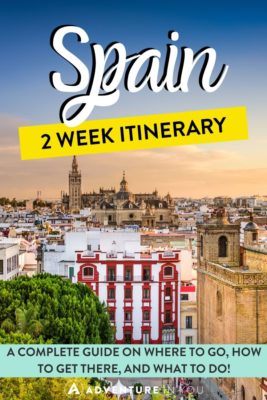Looking for the best Spain Itinerary? I got you covered.
Spain is a country with something for everyone. Whether you’re a huge foodie looking to explore the authentic tapas scene, an art lover drawn in by the world-famous museums, or an adventure junkie looking for an adrenaline-filled trip, there’s a place in Spain for anyone.
One of the best parts about Spain is it’s decently large, with so much to see. Each area of the country is different in terms of landscape, food, and local culture, so venturing around is a must.
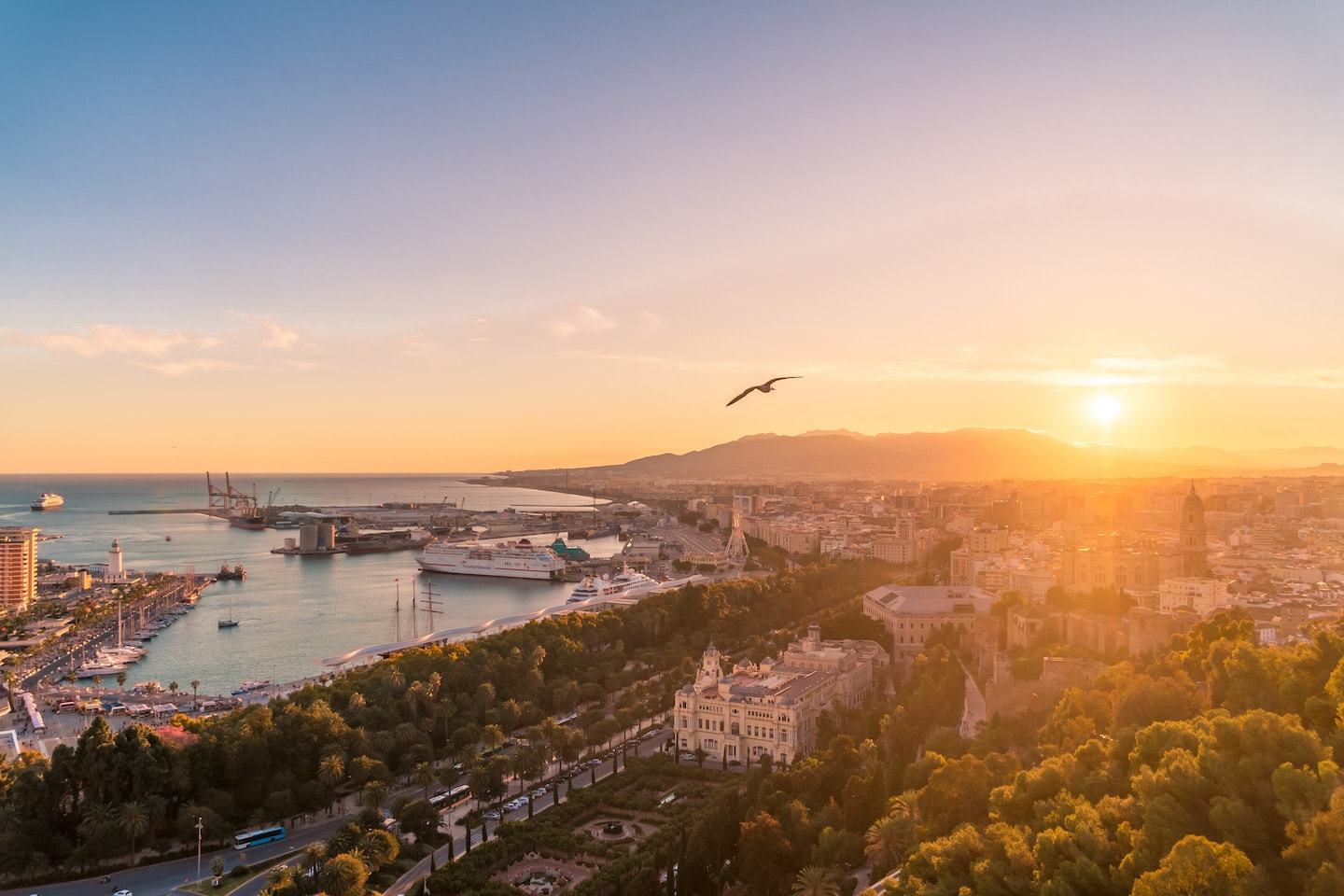
No matter where you end up in Spain, you can’t go wrong. But to help you hit some of the most noteworthy places, here’s a two-week Spain itinerary that will take you to some unmissable spots in the country.
View Contents
- Spain Itinerary: The Perfect Way to Spend 2 Weeks
- Planning Your Spain Itinerary
- Getting Around Spain
- Travel Insurance for Spain
- Spain Itinerary: Where to Go in Spain in 14 Days
- Barcelona (Day 1)
- Barcelona (Day 2)
- Girona (Day 3)
- Valencia (Day 5)
- Madrid (Day 6)
- Madrid (Day 7)
- Toledo (Day 8)
- Seville (Day 9)
- Seville (Day 10)
- Cordoba (Day 11)
- Granada (Day 12)
- Madrid (Day 13)
- Madrid (Day 14)
Spain Itinerary: The Perfect Way to Spend 2 Weeks
This is a brief overview of an ideal two-week itinerary in Spain.
Adapt and take the best from it if you have less time, or stay a little longer in a favorite place if you’re more flexible! Further on, you can see breakdowns of each day, the most notable places to visit in each city, and how to get from place to place with ease.
- Day 1: Barcelona – Arrive and Explore
- Day 2: Barcelona – Gaudi and the Main Sights
- Day 3: Day Trip to Ancient Girona
- Day 4: Valencia – Enjoy Elements of the Past and Future
- Day 5: Valencia – Paella and Gardens
- Day 6: Madrid – Famous City Attractions
- Day 7: Madrid – Museum Day
- Day 8: Day Trip to Toledo – The City of Three Cultures
- Day 9: Seville – Real Alcazar, Cathedral and More
- Day 10: Seville – Wander City Neighborhoods
- Day 11: Day Trip to Cordoba to Visit Mezquita
- Day 12: Granada – Feel Like Royalty at the Alhambra
- Day 13: Madrid – Tours, Shopping, and Park Relaxing
- Day 14: Madrid – Soak in the Last Bit of Spain!
✨The 1 Thing We Never Leave Home Without…✨

Coming from someone who has been traveling the world for the last 8 years AND has been in the hospital 2x, travel insurance is something everyone NEEDS to get. Get a quote below!
Planning Your Spain Itinerary
Here are some main things to keep in mind when planning your trip to Spain.
Best Time to Visit Spain
The first consideration when it comes to planning your trip to Spain is when you want to visit.
You should keep in mind the weather, the crowds, and of course any famous Spanish festivals or events going on during specific times of year.
Want to know more about this country? Click here to read our article on fun facts about Spain
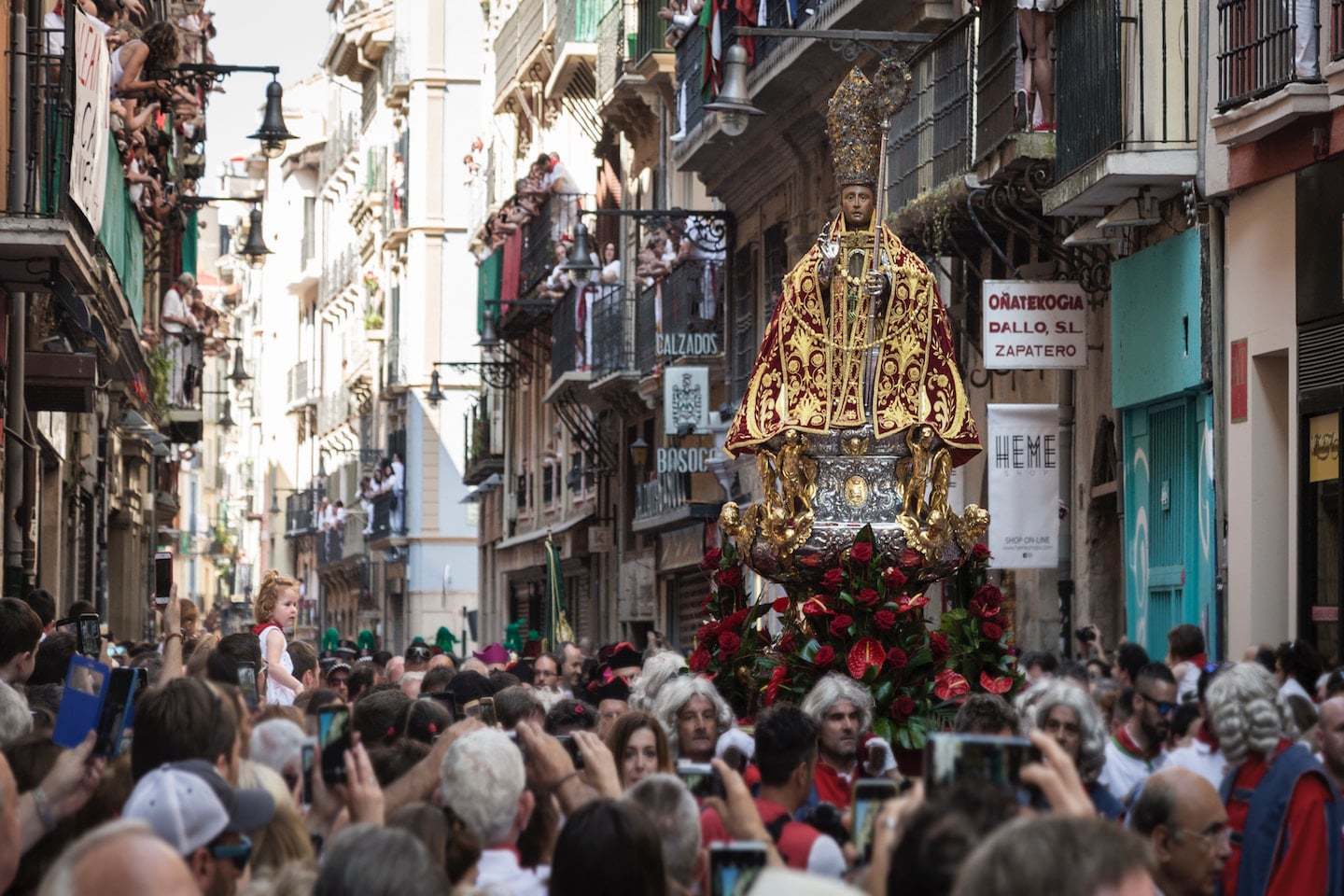
Spain has a distinct peak season, which runs from June through August and tends to spill over on each side as well. This time of year is also tremendously hot, making visiting inland cities somewhat tortuous and undesirable to say the least.
However, there are some unmissable festivals held during summertime in Spain that make visiting during the hottest months an attractive option, along with the long sunny days and open restaurant terraces.
That said, if you’re one to avoid pushing through crowds and hate dripping in sweat everywhere you go, the best time to visit Spain is either in the spring before peak season has begun or in the autumn after peak season has finished.
In the spring, you’ll have delightfully warm weather that’s perfect for hiking and seeing the country start to bloom. In the fall, it’s cool and comfortable, with plenty going on to keep you entertained.
When you visit is entirely up to you, and you’ll find that each time of year in Spain offers visitors something different. But whatever you do, avoid peak season if you can!
Read More: Best Time to Visit Spain
Getting Around Spain
Spain is a fairly large country, but luckily there’s a wide range of transportation options available to travelers and locals alike to get from Point A to Point B.
One of the most common (and easiest) ways to venture through Spain is via train. The rail network is massive, connecting cities (large and small) to one another. There are high-speed trains that can get you across the country in a few hours, and standard trains for shorter trips.
No matter which you choose, you’ll find navigating Spain by rail is incredibly easy and comfortable as well.
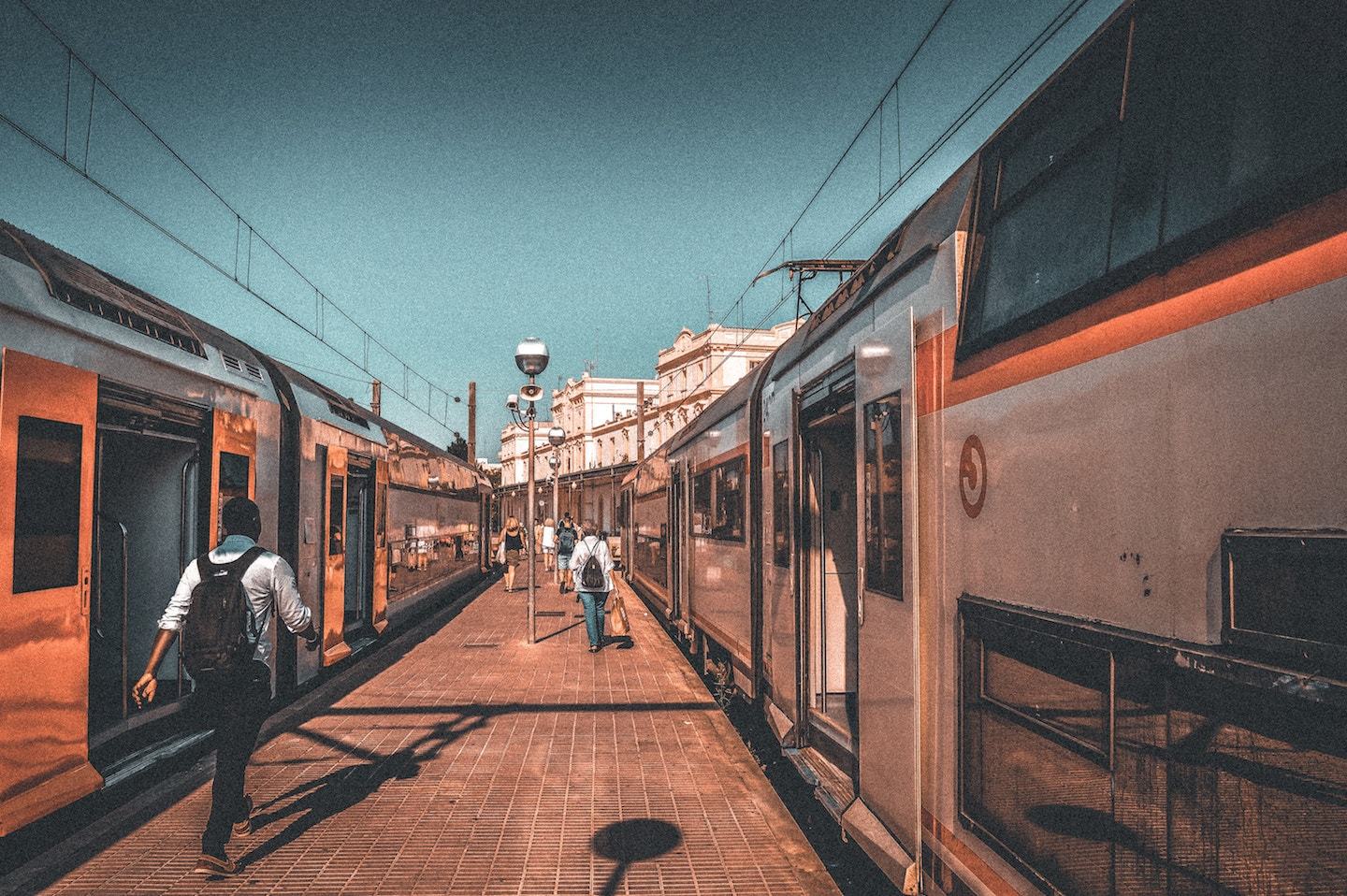
If you’d rather move around by road, there are also bus options pretty much everywhere in the country that not only serve the city or town you’re in, but take longer journeys throughout Spain as well.
Traveling by bus tends to be the most budget-friendly option. Bus tickets don’t cost as much as train tickets, and you can generally find buses going anywhere you’d like to visit. The one downside to taking buses is they can take forever, especially winding around mountainous roads or navigating narrow city streets.
Another awesome budget-conscious option for Spanish travel is to use carpooling apps like BlaBlaCar.
BlaBlaCar allows you to look for someone with a car who’s making the same trip as you are. You pay a set price, meet at the pick-up location and then get to ride along to wherever you’re both going!
I’ve used BlaBlaCar in France and have only ever had awesome experiences. It’s generally quite inexpensive, super convenient, and filled with other cool travelers willing to give a ride.
If you don’t mind splurging, renting a car is certainly the way to go when it comes to traveling throughout Spain.
There’s nothing quite like driving along the idyllic coastline with beaches, rock formations, and water as far as the eye can see. Renting a car is definitely a pricey option, especially for your entire trip, but it’s super practical if you’d rather move around on your own schedule.

Plus, one of my favorite parts about exploring a new country by car is you can stop in any small town or village along the way, which is not something you can do while traveling on a bus or train.
Finally, to cut your travel time, you can also fly around Spain. It’s definitely a more expensive means of transportation but it’ll get you to your new city practically in the blink of an eye.
Accommodation in Spain
Besides figuring out how to get from Point A to Point B, you’ll also need to figure out where to stay.
Luckily, Spain is filled to the brim with hotels, hostels, guesthouses, apartments for rent, and campsites so you’ll always have your fair share of accommodation options to choose from.
However, just because there are endless options, doesn’t mean you’ll always be able to find an available room or two. This is especially true during peak season, around Christmas, and during other festivals going on throughout the year in Spain.
Because of this, it’s super important to book your accommodation early on. This can be annoying if you don’t have a set plan, but if that’s the case, book rooms that can be easily refunded in case you have to switch things up.
To find awesome places to stay in Spain, I’d recommend checking out Airbnb which has killer prices and deals on accommodation throughout the country (and the rest of the world).
Want to know more about this country? Check out our guide to fun facts about Spain
Psst...Want in on a Secret? 🤫

We've scoured the internet for the best ALL-AROUND travel shoe and Tropicfeel wins by far. We've taken ours through rivers, jungles, and cities and they're still alive and kickin'. Check them out below.
Travel Insurance for Spain
Finally, when it comes to planning a trip to Spain – or anywhere else for that matter – it’s of the utmost importance that you have travel insurance.
Travel insurance makes sure that you’re covered in case of a medical emergency and ensures that you won’t be paying hospital bills out of your own pocket. While it’s unlikely you’ll end up in the ER, accidents do happen and it’s much better to be safe than sorry.
Trust us, it’s one of those things you don’t want to leave home without. We recommend either World Nomads or Safety Wing, depending on the type of traveler you are.
Spain Itinerary: Where to Go in Spain in 14 Days
Barcelona (Day 1)
There’s no better place to welcome visitors to Spain than Barcelona. The undying lively atmosphere, world-famous attractions and monuments, and stupendous beaches all wrapped into one.
Seriously, where better to get a sense of all that Spain has to offer?
Although there are so many things to do in Barcelona, you’ll spend your first day getting to know the city to prepare you for the next two weeks of exploration.
Here are some spots that shouldn’t be missed on your first day of discovering Barcelona. But know that the best is yet to come!
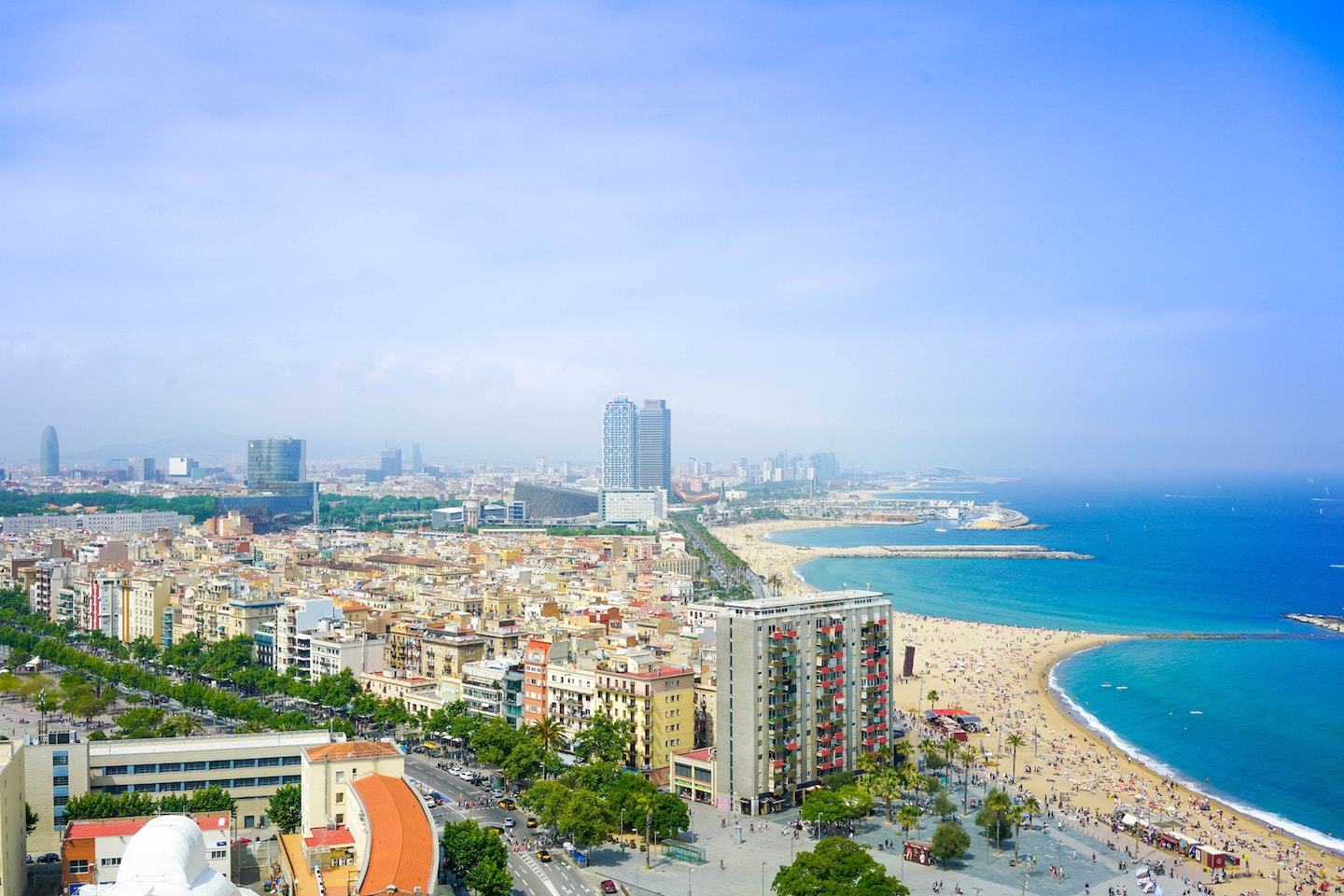
Plaça de Catalunya
First things first: head to Plaça de Catalunya to stand right in the heart of Barcelona. You’ll be surrounded by fountains shooting plumes of water, giant buildings depicting all different kinds of architecture, and a city square that serves as a meeting place for locals and foreigners alike.
Plaça de Catalunya is an important place not only because it sits in the middle of the city, but also marks the start of other famous Barcelona places like Las Ramblas and the Gothic Quarter. For that reason, it’s a marvelous place to start your stay.
Once you’ve finished snooping around the shops and exploring the square, you can easily set out to visit whatever comes next!
Las Ramblas & Plaça Reial
Las Ramblas is another picture perfect place to spend your first day in Barcelona. Considered the city’s main street, it’s lined with shops, park benches, and more street performers than you could imagine.
While walking Las Ramblas, keep your eye out for the entrance to La Boqueria, a Spanish market with a wide array of local delicacies. There are colorful spices hanging in ropes from the ceiling and delectable little bites being served from skillets. This is certainly a Barcelona highlight and cannot be missed!
After strolling along Las Ramblas, you can head over to nearby Plaça Reial for a poppin’ bar scene, tons of restaurants, and even more street performers.
It’s a dazzling place to grab a bite to eat as there’s so much going on, and you’ll be able to situate yourself right in the thick of it all with a seat on a terrace for some tapas!
Gothic Quarter
While Barcelona seems young and hip, the city still has its fair share of history that dates back to centuries long ago.
This is perfectly evident with a stroll through the Gothic Quarter. This area is filled with medieval architecture, intricate details, and streets that have been there for thousands of years. You’ll feel completely transported, especially after visiting more modern parts of the city, but that just goes to show the deep complexities that Barcelona is so well-known for!
The most notable attraction in the Gothic Quarter is the Barcelona Cathedral which sits high in the sky compared to the surrounding buildings. When the church bell rings, you can practically feel the vibrations going throughout the city. How cool is that!?
The Gothic Quarter is also one of the best spots to enjoy cocktail bars and lively Barcelona nightlife, so get ready to party into the night on your first day in Spain!
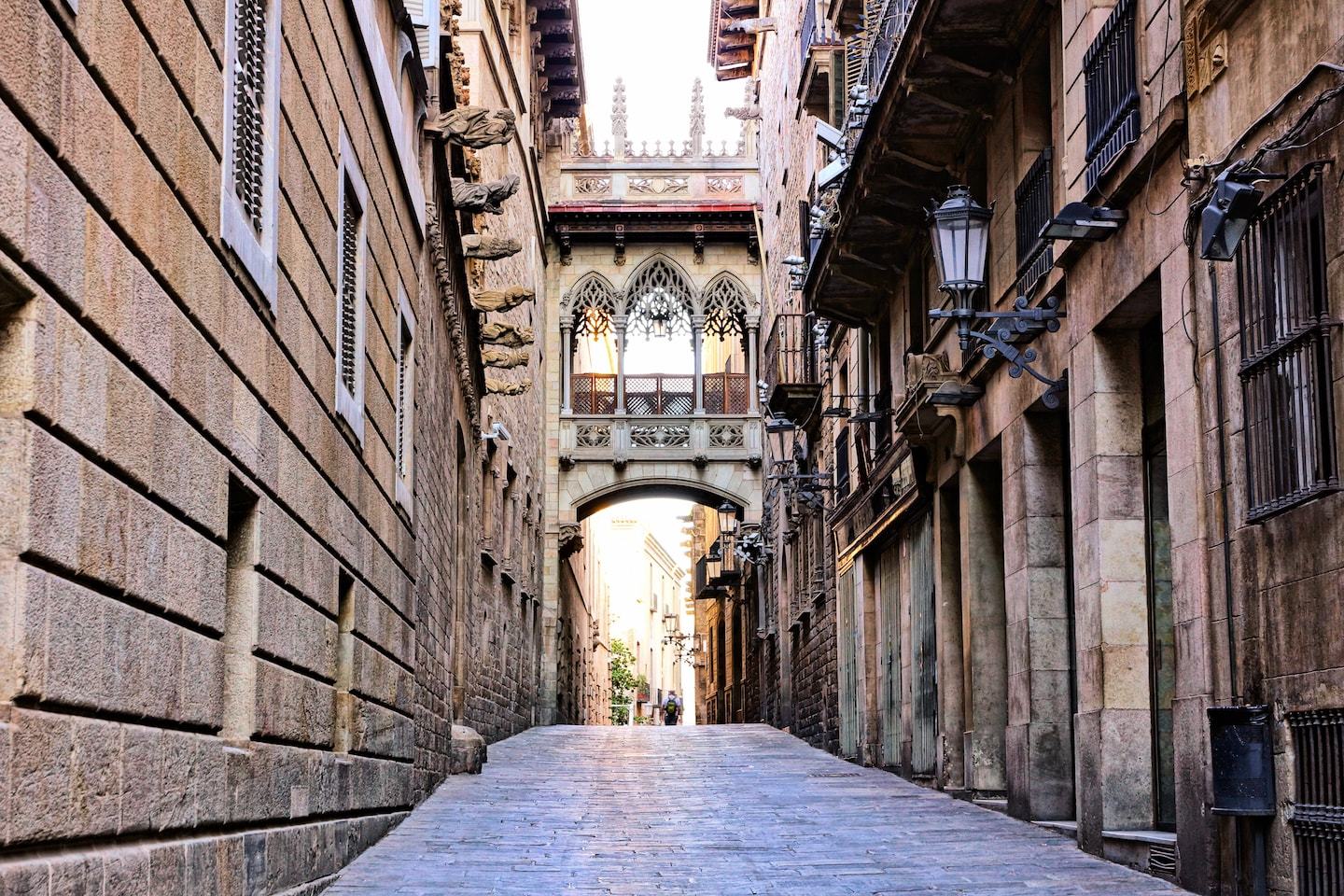
Museo Picasso
You should also take the chance to visit one of the best museums in Barcelona: Museo Picasso.
The city was actually a major inspiration to this epic artist, and the museum holds one of the greatest collections of his works in the world. Enjoy meandering about and gazing at more than 100 of Picasso’s pieces. You may even be able to start making meaning of his eccentric art after two days in the city that influenced him!
Dinner on the Beach
End your first day with dinner at one of the many restaurants lining La Barceloneta, the famed city beach.
You’ll be able to catch a glimpse of the stragglers left behind after a day in the sun while feasting on fresh seafood, tapas, and ice cold sangria. Enjoy sea views and sandy toes while stuffing yourself with the city’s best food! What better way to end day one?
Barcelona (Day 2)
After conquering your first day in Barcelona, you’re probably going to be itching to see even more of this colorful and exciting city. Here are some must-visit spots for day 2!
Sagrada Familia
Worked on intensely by Gaudí, this is perhaps his finest masterpiece. The details of the facade and layout of the entire structure are nothing short of remarkable. Stand under the stained glass and be covered in bright colors, and enjoy the reflection of the cathedral on the lake. This is an immensely special place so enjoy it to its fullest!
The iconic symbol of Barcelona, you should start your day with a trip to this soaring cathedral better known as Spain’s Eiffel Tower.
Visiting Sagrada Familia is a truly special experience, just be sure to get tickets ahead of time so you’re not stuck waiting with all the crowds! Even better, purchase ones that allow you to skip the line!

Gaudí Architecture – Casa Mila & Casa Batlló
Continue your Gaudí appreciation with the next two stops!
Responsible for some of Bareclona’s crown jewels, Gaudí designed some of the coolest buildings in the entire city. Aside from the Sagrada Familia, you can also find true Gaudí shining through buildings like Casa Milà and Casa Batlló, which are definitely worth a visit.
Each building features distinct curves with a funky design and atmosphere that practically screams Gaudí from a million miles away. They’re bright, colorful, and hypnotic to say the least.
Visit both of these places to truly understand why people are so crazy for Gaudí and who knows, you may end up falling in love with his Dr. Seuss-like style, too!
Park Güell
Top your day of Gaudí with a visit to Park Güell, a Barcelona staple. This UNESCO World Heritage Site is full of quirky, interesting architecture — which, as you probably know by now, is the norm when it comes to Gaudí’s work.
Park Güell the best place for panoramic views of the city and beach below. Enjoy the sight of the sprawling Balearic Sea that reaches as far as the eye can see. This is a great spot to enjoy the sunset in Barcelona!
As this is one of the main tourist attractions in Barcelona, you can always expect long lines and crowds trying to take in the splendor. To avoid this, purchase a skip-the-line ticket ahead of time so you can bypass everyone waiting.
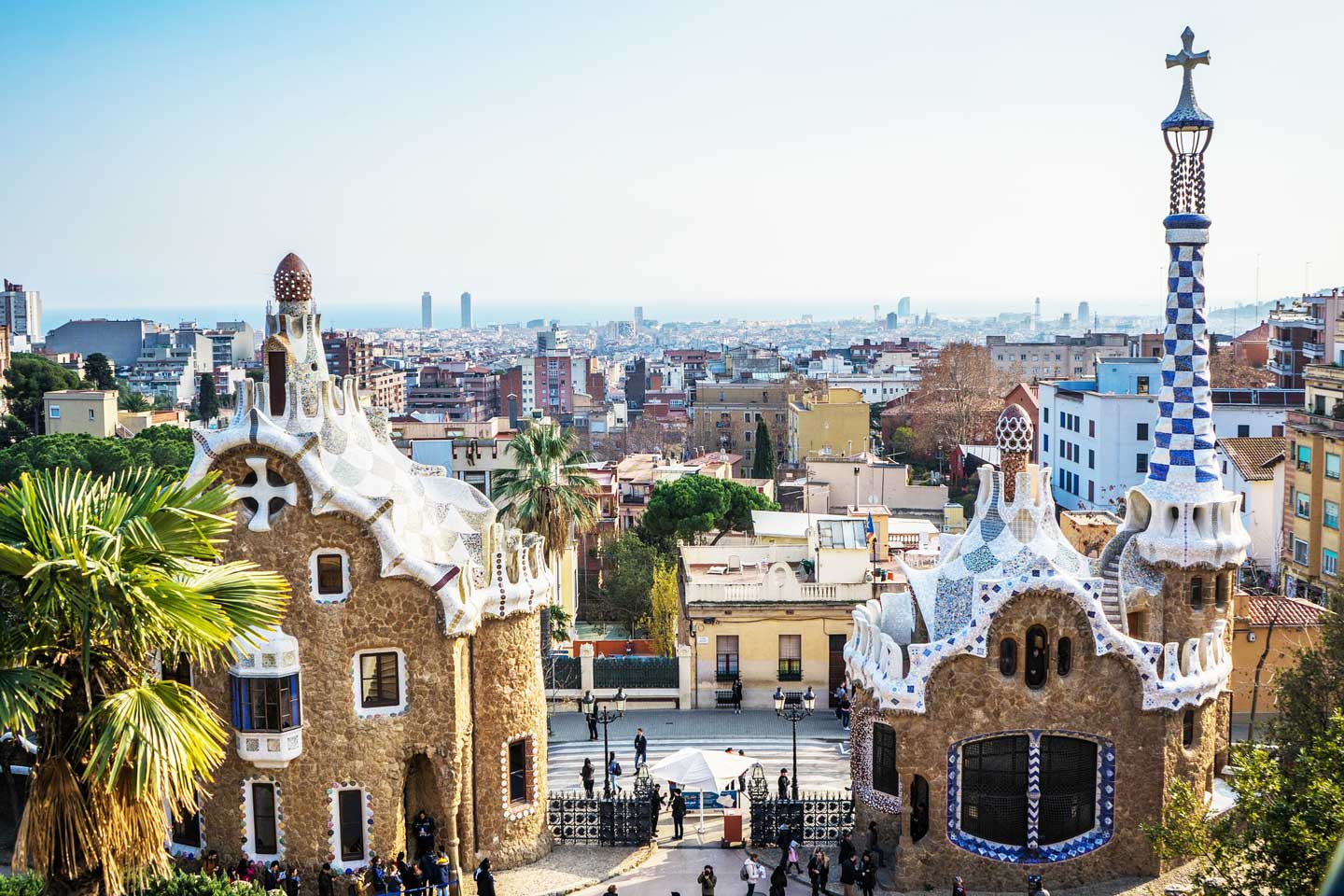
Plaça d’Espanya
Finally, end your first day with a visit to Plaça d’Espanya. You will surely be in awe after seeing the colossal palace that’s considered the centerpiece of the square.
Besides the massive building adorned with fountains, towers and ornate details, there’s also a tremendous gallery in the plaza. The Museum of National Art of Catalunya is a great look into artistic works from this part of the world.
If you aren’t a huge art person, a simple visit to the building should do the trick of leaving you speechless from the glorious design and viewpoints it provides.
Insider Tip: The Magic Fountain of Montjuic in Plaça d’Espanya has huge water and light show displays every night that project more than 7 billion light and water combinations! The shows are typically from 8.oo-9.00pm in the winter and 9.00-10.00pm during summer months. The best spot to view the fountain festivities is from the pedestrian bridge. Just be sure to arrive early to secure a good viewing spot!
For more on Barcelona: Where to Stay in Barcelona | Best Day Trips from Barcelona You Should Take | The Ultimate Barcelona Itinerary
Girona (Day 3)
Now that you’ve had two full days in Barcelona, what do you say about a little day trip?
Girona is nearby and makes a marvelous quick journey to get a taste of something different after Spain’s tourist capital.
Getting There: Girona is fantastically close to Barcelona; it only takes a mere 40 minutes to get from city to city by high-speed AVE train. Once you arrive in this ancient Catalan city, it’s time to hit the ground running as there’s plenty to see and only one day to enjoy it!

Ancient City Walls
What makes Girona such a standout city to visit in Spain is that it absolutely transports you to medieval times. This is only further emphasized once you’re inside the city and surrounded by the colossal walls that lock everything in.
For the best vantage point in the city, have a walk along the walls to see everything down below. You’ll get to walk through towers and take in the sight of the surrounding countryside, as well as the architecture and cathedrals that stick out from the rest of the buildings.
It’s certainly the best place in the city for snapping photos and gets eerily majestic with the mountains in the far distance.
Girona Cathedral
It wouldn’t be a true Spanish city without a cathedral, and Girona is no exception.
The Girona Cathedral is massive compared to everything else in the city and seems to tower over all else. It was built between the 11th and 18th centuries, and is a simply exquisite place to visit! It’s an outstandingly gorgeous stone structure, with a square main sanctuary and a huge pointed tower just next-door.
El Call
A stop by Girona’s Jewish Quarter is a must while visiting the city. Besides the tremendous history that goes along with the district, the entire area is wildly photogenic with its stone construction, narrow alleys and winding staircases.
In fact, part of the area was even used for filming Game of Thrones!
To round out your trip, stop by the Museum of Jewish History, if you have some extra time and want to learn more about Girona’s Jews.
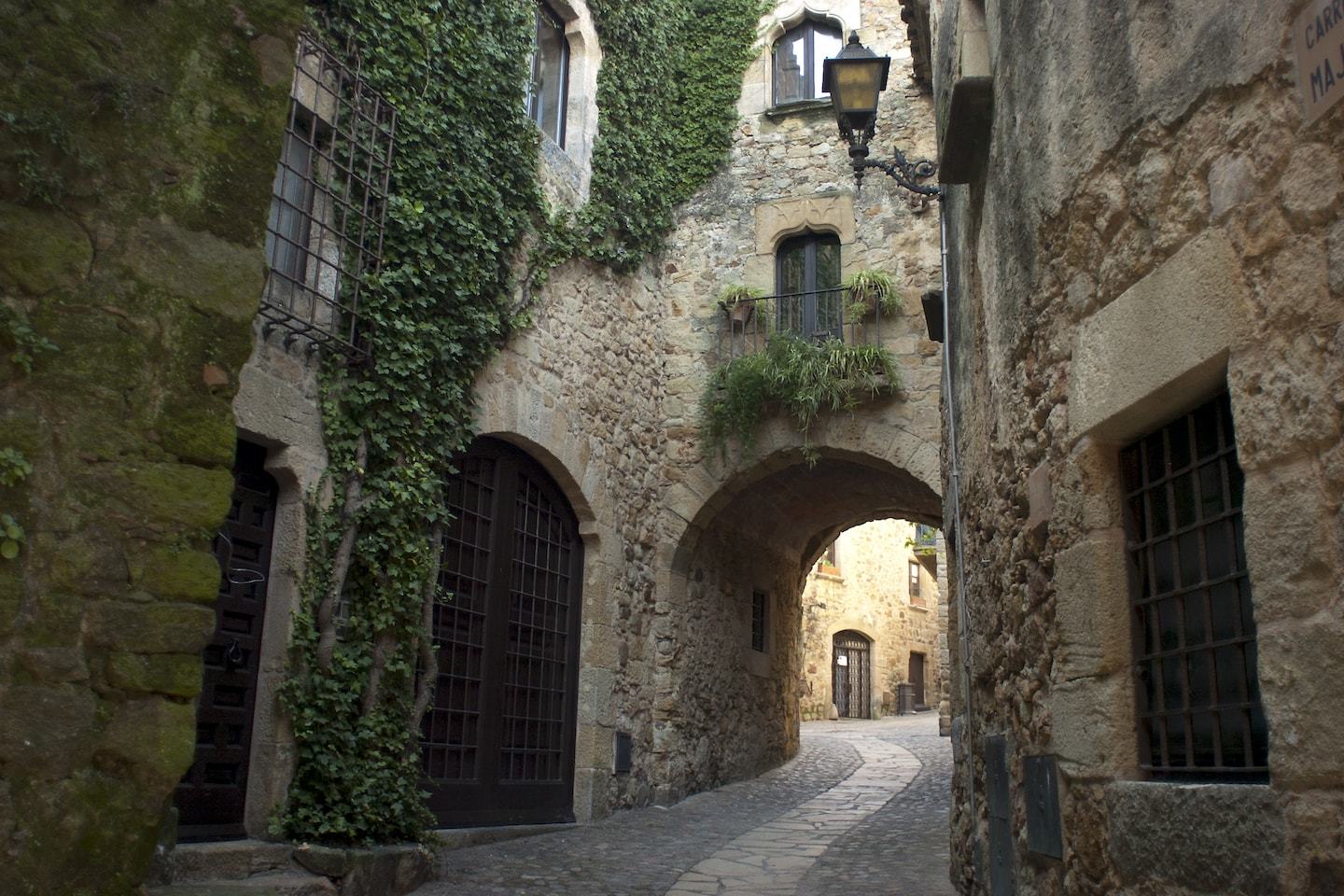
Arab Baths
Constructed in the 12th century, these former baths were inspired by the Romans and are certainly worth paying a visit while in Girona.
From the outside, the building looks rather simple, but once inside, the details of the stone work are simply outstanding and the tall pillars surrounding the central bath let light in like you’ve never seen before.
You may also recognize the bathhouse from Game of Thrones as Arya uses the area to seek refugee at one point during her time in Braavos.
Rambla de la Llibertat
A lovely street for a Girona stroll, this pedestrian boulevard is filled with shops, restaurants and is as bustling as this little city gets.
This pedestrian-only street is lined with trees, old school lamps and light fixtures hanging overhead, giving a charming glow as you traverse along. The street has an interesting combination of Gothic, Baroque and Neoclassical buildings, giving a peek into all of the transitions that Girona went through.
If you’re visiting on a Saturday, besides the buildings and shopping, be sure to stop by as there’s a flower market that’s simply divine!
Tip: While you can easily travel around Spain on trains and buses, driving is also another option. Simply get a rental car, fire up Google Maps, and you can navigate around the places on your itinerary… and even stop in cute little towns or viewpoints along the way!
Valencia (Day 4)
After returning to Barcelona after your day in Girona, it’s time to head to your next location: Valencia.
Valencia is strikingly different from other places in Spain as it’s full of futuristic-looking buildings that are vastly opposite from the Baroque, Renaissance, and Gothic architecture that’s seen throughout the rest of Spain.
This city is a thriving place when it comes to culture and the arts, and there’s plenty to do both during the day and after the sun goes down. It’s also the home of paella, so gorging yourself on local Spanish cuisine during your visit is a must.
Getting There: Traveling from Barcelona to Valencia is probably going to be your longest day of travel, besides flying in and out of the country in the first place. It’s a three-to-five-hour journey so be sure to pack plenty of snacks for the ride!
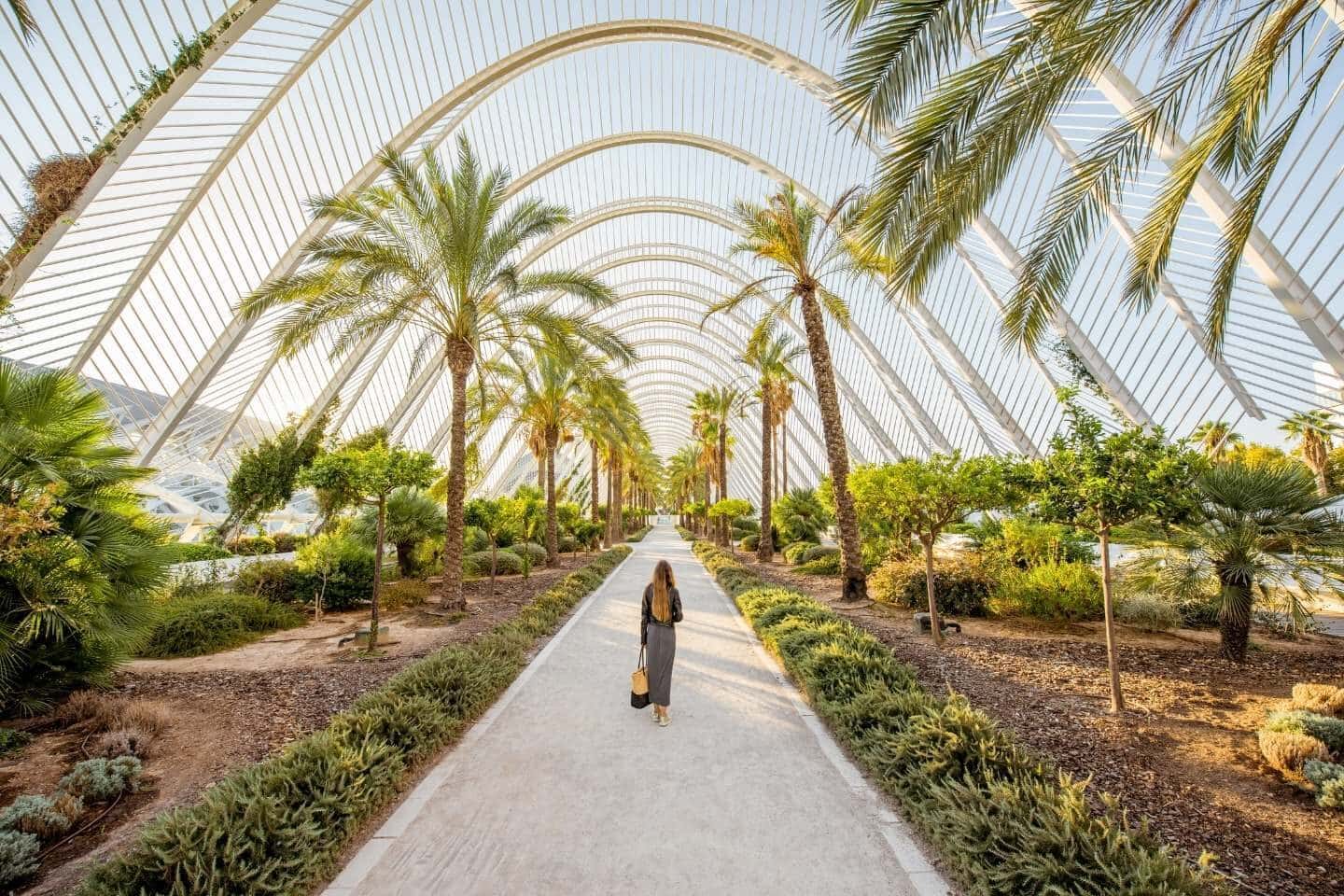
The first way you can get to Valencia is by taking the AVE high-speed train. It runs from Barcelona Sants station many times every day, and is relatively quick at just three hours. However, the downsides to taking the train are it’s quite pricey and you miss a lot of the coastal scenery that makes this journey so beautiful.
Alternatively, you can take a bus between the two cities which will take roughly four and a half hours. Buses depart from Sants and Nord stations in Barcelona, and tickets are generally much cheaper than those for the train.
Once arriving in Valencia, there’s a lot to see and do in this interesting city, so it’s best to drop your bags quickly and get out for some exploring.
City of Arts and Sciences
The wild centerpiece of Valencia is the giant City of Arts and Sciences compound designed by multiple local architects to create the futuristic paradise that stands in the city today. Besides just marveling at the buildings, the six distinct district zones offer visitors unique experiences.
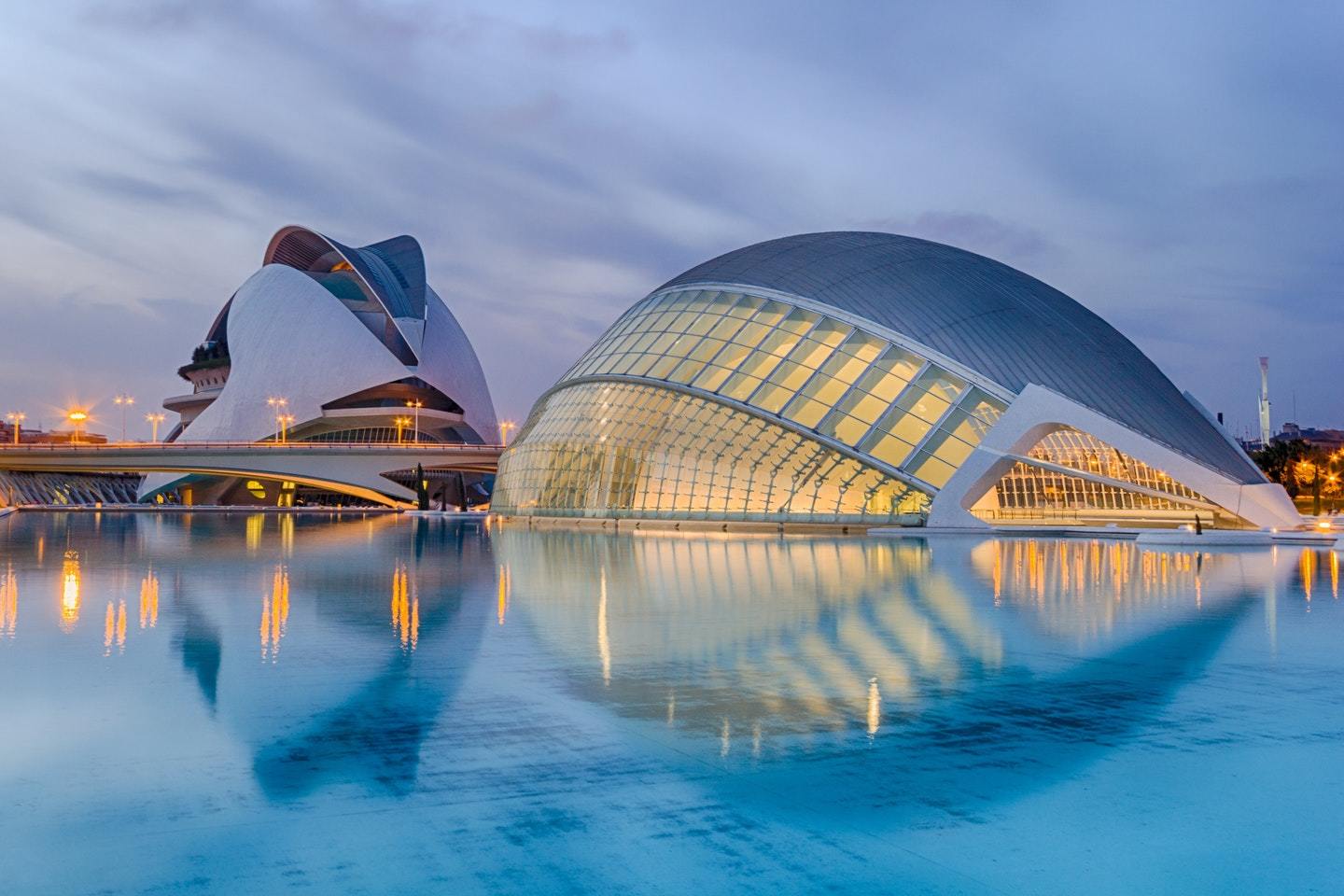
Be sure to check out L’Oceanografic while in the area as it’s a magical oceanarium filled with more than 45,000 exotic animals, dolphin displays, and more. Best of all, it has the largest glass water tunnel in Europe where marine life swims around you as you pass through. How freaking cool?
Another great spot to visit in the City of Arts and Sciences is L’Umbracle, a gorgeous sculpture garden and landscaped walk under an arched glass roof. Be sure to stop by the garden’s bar, Terraza L’Umbracle, on your visit to lounge about, or return in the evening when the dancefloor comes to life.
You may want to purchase a full-day combined ticket to make your visit as convenient as possible!
Valencia Central Market
Okay, now for what you’ve been waiting for: the food.
One of the best places to seek out local specialties is at the Valencia Central Market, a giant (I mean, giant) building filled with stalls and vendors selling their goods.
Take in unique sights, smells and tastes of the city and get up close and personal with what daily life is like in Valencia. This is an awesome place to grab food for an afternoon picnic (if the weather is good) and then head to a park or plaza to enjoy your spread!
Just keep in mind that the market closes at 3.00pm, so stop by on the early part of your day.
Valencia Cathedral
In stark contrast to the City of Arts and Sciences, the Valencia Cathedral provides visitors with integral history of the land they’re in, along with some few noteworthy surprises.
Besides the sprawling construction that makes up the Cathedral, there’s also the Miguelete Bell Tower which you can climb for some of the best views of the entire city. When returning to the main chapel, keep your eyes out for the two Goya paintings hanging on the walls.
Finally, the most exciting part about a visit to the Valencia Cathedral is that it’s home to The Holy Grail that Jesus drank from at the last supper. Talk about a blast from the past, huh?
Main City Plazas
Speaking of plazas, Valencia is full of them.
Here are some that are worth a visit, even just for a quick Spanish coffee:
- Plaza de la Virgen is home to the Turia Fountain, a lovely monument situated in the center of the iconic historic buildings that line the square. At night, the buildings are beautiful lit and it’s a lovely place for a stroll after dinner.
- Plaza del Ayuntamiento is where you can find the Town Hall Square. This plaza is as full of life as it is beautiful, and you’ll love having a stroll around the manicured lawns while taking in the giant buildings!
- Plaza de Toros de Valencia is a little different than the other plazas on this list as it’s actually a bullring that was built between 1850 and 1859. Even if you aren’t big on bullfighting, it’s an interesting place to visit as it’s so central to the city’s and country’s culture!
Valencia Old Town
End your day of city walking in Valencia’s Old Town, or the Historic Center. It’s considered to be the “downtown” area so you’ll find plenty of shops and delicious restaurants for shopping and dinner.
You’ve probably already been through Old Town at some point during your day, as this is the location of the Central Market and the Cathedral, but it’s a great place to revisit at night to stroll along the narrow streets with a full belly.
Insider Tip: For one of the most marvelous festivals in all of Spain, visit Valencia during March to enjoy Las Fallas! The entire city makes giant cardboard sculptures and parades them through the streets before burning them on the night of March 19th in honor of the patron saint.
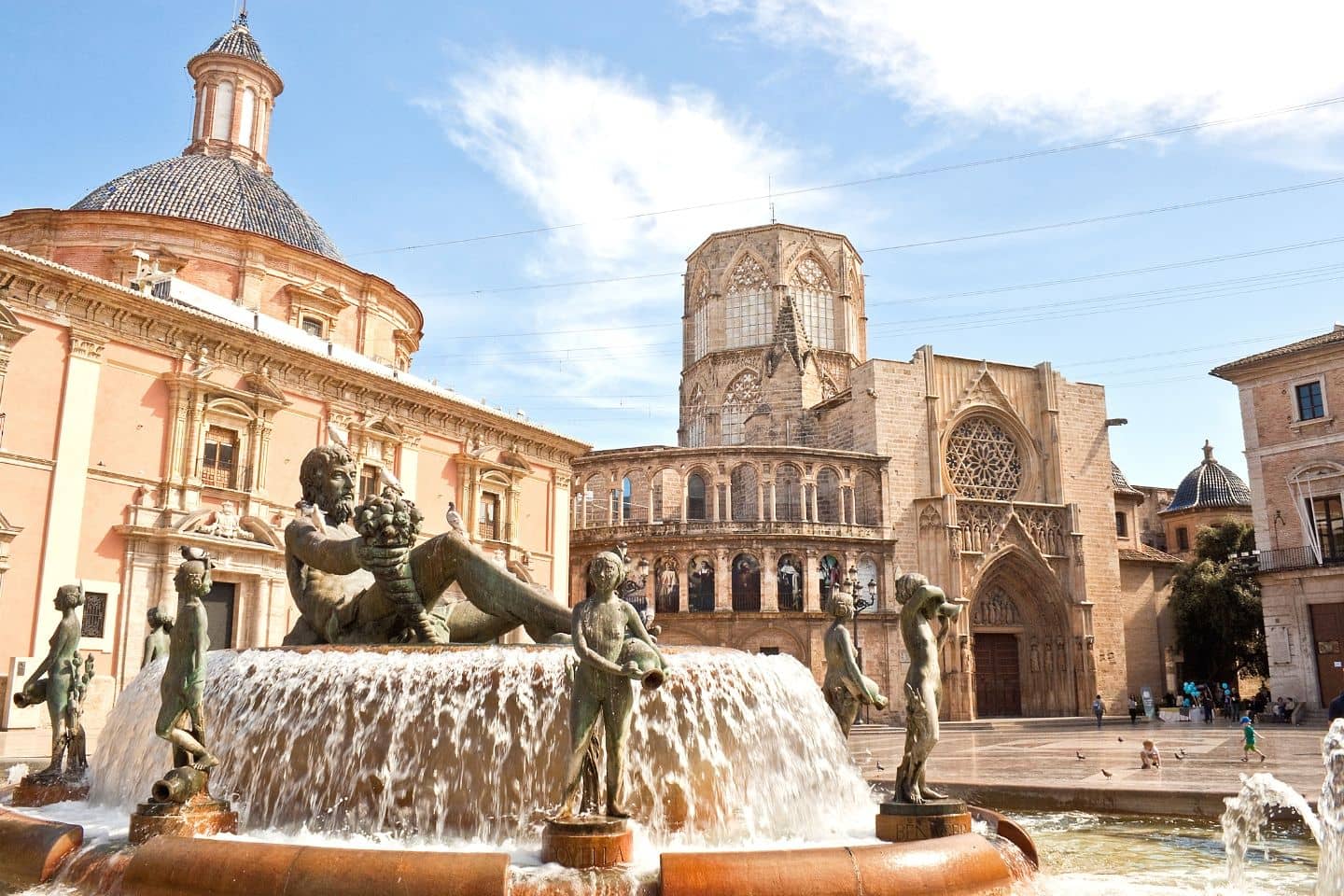
Valencia (Day 5)
Day 2 in Valencia calls for enjoying yourself to the fullest.
Now that you’ve got lots of the cultural and historical bits of the city accounted for, you can properly enjoy Valencian specialties by way of food, gardens, and entertainment.
Take a Food Tour or Cooking Class
One of the best activities you can do while in Valencia is take a food tour.
Valencia is home to paella, one of the most famous Spanish dishes, so it’s only right that you try several different varieties of it while visiting the city. On a food tour through Valencia, you’ll also get to taste unique tapas from the region and enjoy the finest Spanish wine.
If you prefer a more hands-on Valencian food experience, perhaps opt for a cooking class instead. During a cooking class in Valencia, you’ll not only eat the prized dishes, but learn the cook them as well! This way, you can take a little bit of España home with you after the trip.
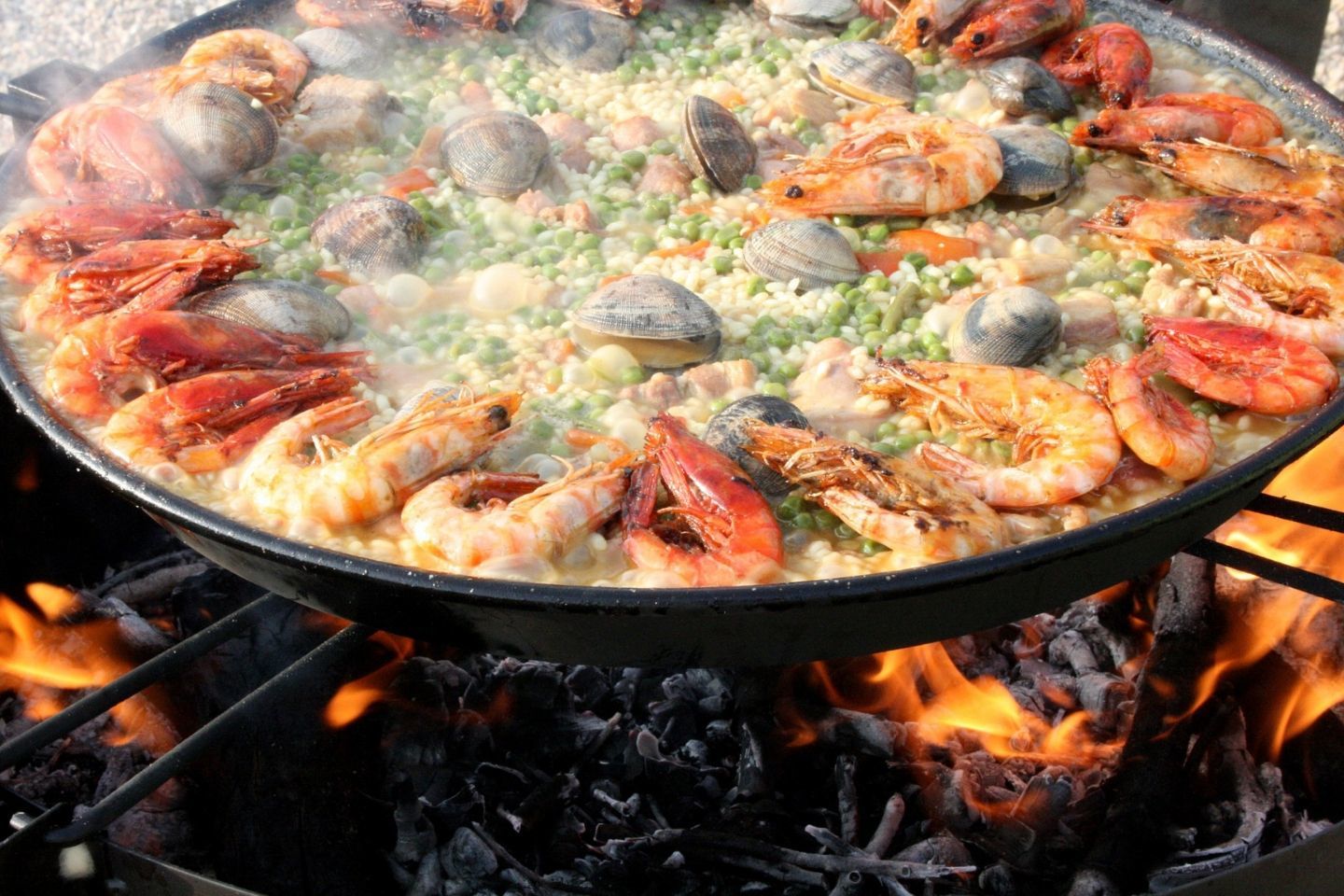
Read More: What to Eat in Spain
Jardines del Real
The Gardens of Valencia are a beautiful place to spend an afternoon basking in the warm sun and digesting the pounds of paella that has inevitably been eaten. The Gardens sit where the Royal Palace once stood, and it has magnificent displays of botanical diversity.
While strolling through the park, you’ll inevitably come across the Museum of Natural Sciences which is an awesome place to visit if you’re into fossils.
If not, enjoy wandering among the palm trees, fountains, and rose gardens at the Jardines del Real for some relaxing.
Valencia Beaches
To really round out your Mediterranean vacation, head to the beach on your last day in Valencia before heading inland. The city has miles upon miles of sandy stretches bordered by the city on one side and the sea on the other.
If you’re looking for some peace and quiet, head to Albufera National Park for La Devesa beach. Alternatively, head to Las Arenas to stay close to the city. Here, you’ll find plenty of beach promenade to walk along as you look for a sandy snack.
Close out your day here and catch one last sunset before heading into town for one more skillet of paella.
For more on Valencia: Things to Do in Valencia That You Just Can’t Miss | Where to Stay in Valencia, Spain
Madrid (Day 6)
Nearing the end of your first week in Spain, you’ll head to the country’s capital: Madrid.
Famed for art, culture, and lavish shopping, there’s no better way to learn about the rich history of Spanish life than with a visit to Madrid.
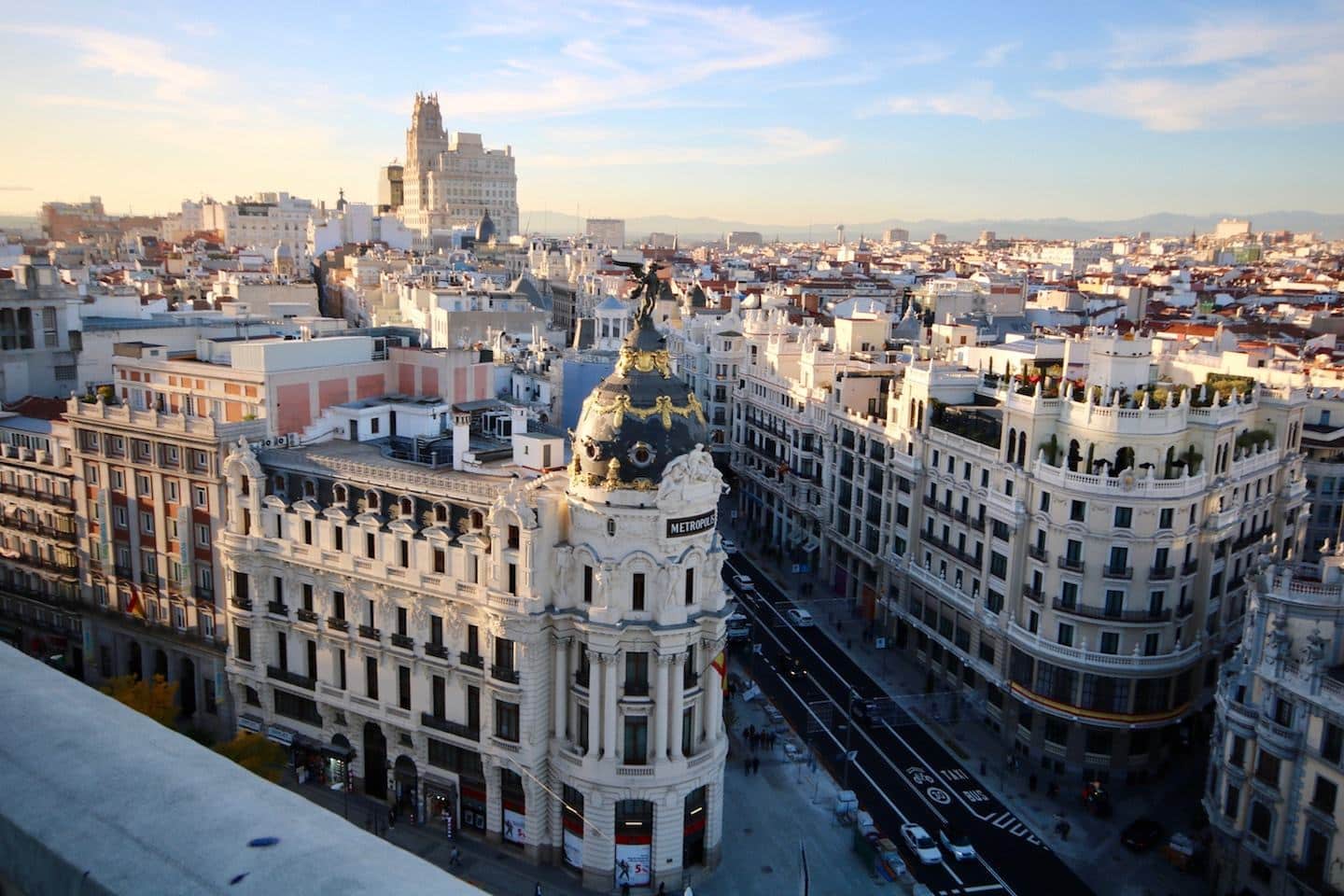
One of the cool things about Madrid is that unlike most other famous cities around the world, there isn’t a single landmark that defines it. Instead, it’s an interesting mixture of important landmarks, grandiose buildings, and large city plazas that draw in people from all over the world.
Getting There: Like with most destinations around Spain, Madrid is easily reached from Valencia by high-speed AVE train run by Renfe. The journey takes about an hour and thirty-five minutes (nearly two hours faster than it takes to drive the distance), and will drop you right at Madrid’s Atocha station.
Spend your first day in Madrid walking around the city to get a feel for it, and Spanish life in general. Here are some awesome places to visit while wandering!
Madrid City Squares
Plaza Mayor is an awesome place for people watching, Renaissance architecture, and Spanish espresso.
This city square is surrounded on all sides by magnificent buildings with arcade passages running under each one, perfect for exploring after a coffee. Chill out and watch the hustle and bustle of both tourists and locals alike moving through the square!
Near Plaza Mayor is Puerto del Sol, another city square that’s best known for being the exact center of Spain, which is marked by the Kilometre Zero Stone Slab.
You’ll find plenty of other landmarks in this area like the El Oso y El Madrono statue that depicts a bear eating off a strawberry tree. There’s also the Post Office Building with the clock tower used for counting down to the New Year every December 31st.
A last plaza to make your way to is Plaza de Cibeles, Madrid’s most famous and known for the best sunsets. You’ll find people gazing at the show-stopping architecture or tossing coins in the fountains. It’s really a gorgeous sight.
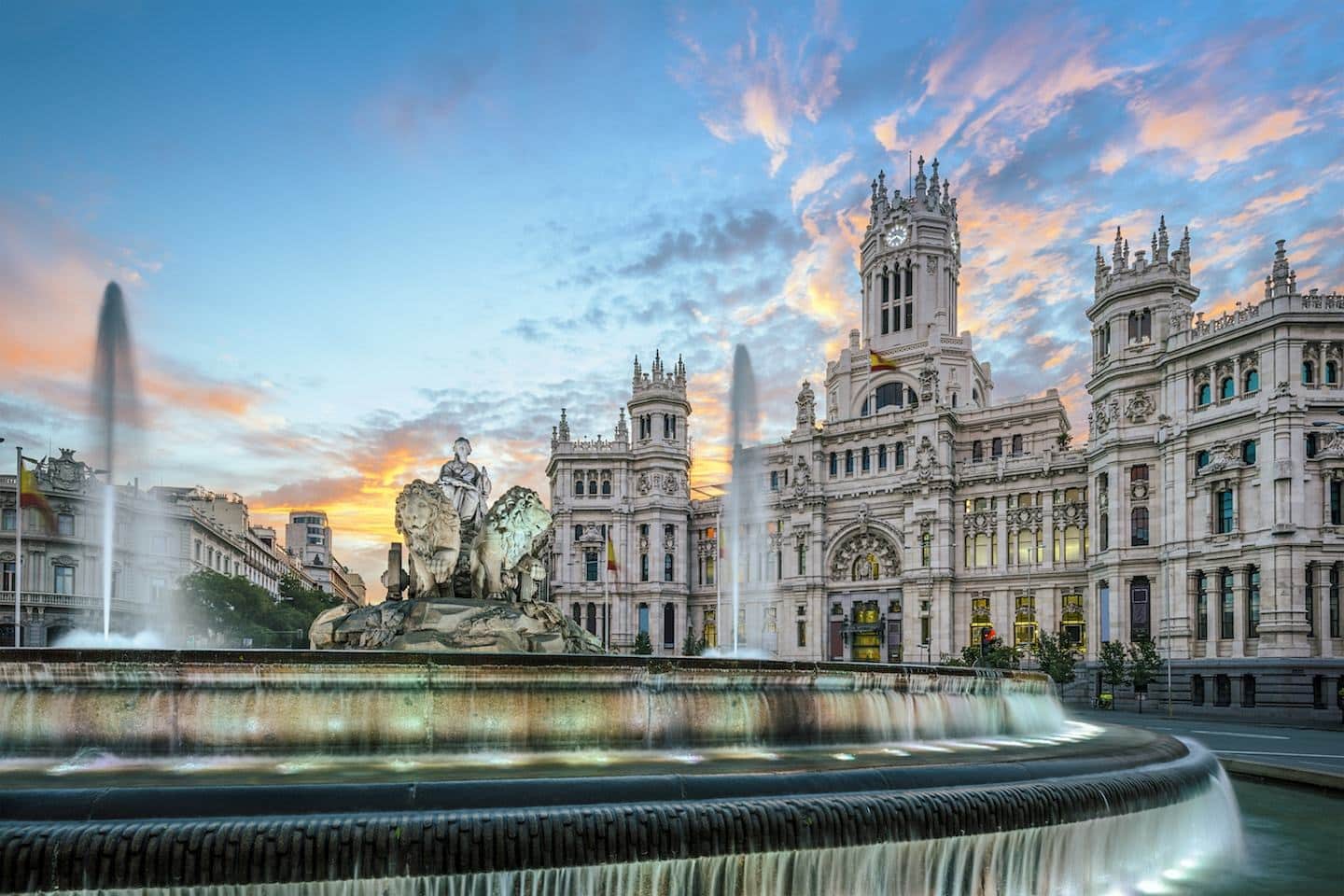
Be sure to check out Terraza Cibeles, a rooftop bar located in the plaza. It’s the best for sunset drinks!
Gran Via
The most famous boulevard in Madrid, Gran Via, is a great place for an afternoon stroll and a bite to eat.
It’s a super chic part of town with shopping, gorgeous buildings, and plenty of restaurant terraces. You can also find entertainment spots like cinemas, theaters, and some of Madrid’s hottest nightclubs here as well!
Royal Palace
Formerly the home of Spanish royalty, the Royal Palace is a fun place to walk around and learn about Spanish history. There are great open halls, complemented by a mere 2,800 rooms filled with artifacts galore, which gives this compound the title of the largest royal palace in Western Europe.
On a visit here, be sure to stop by the Royal Armory, the Main Staircase, and of course the Hall of Columns! It’s generally worth it to purchase a skip-the-line guided tour beforehand so you can avoid the crowds and feel like royalty while being toured around the palace.
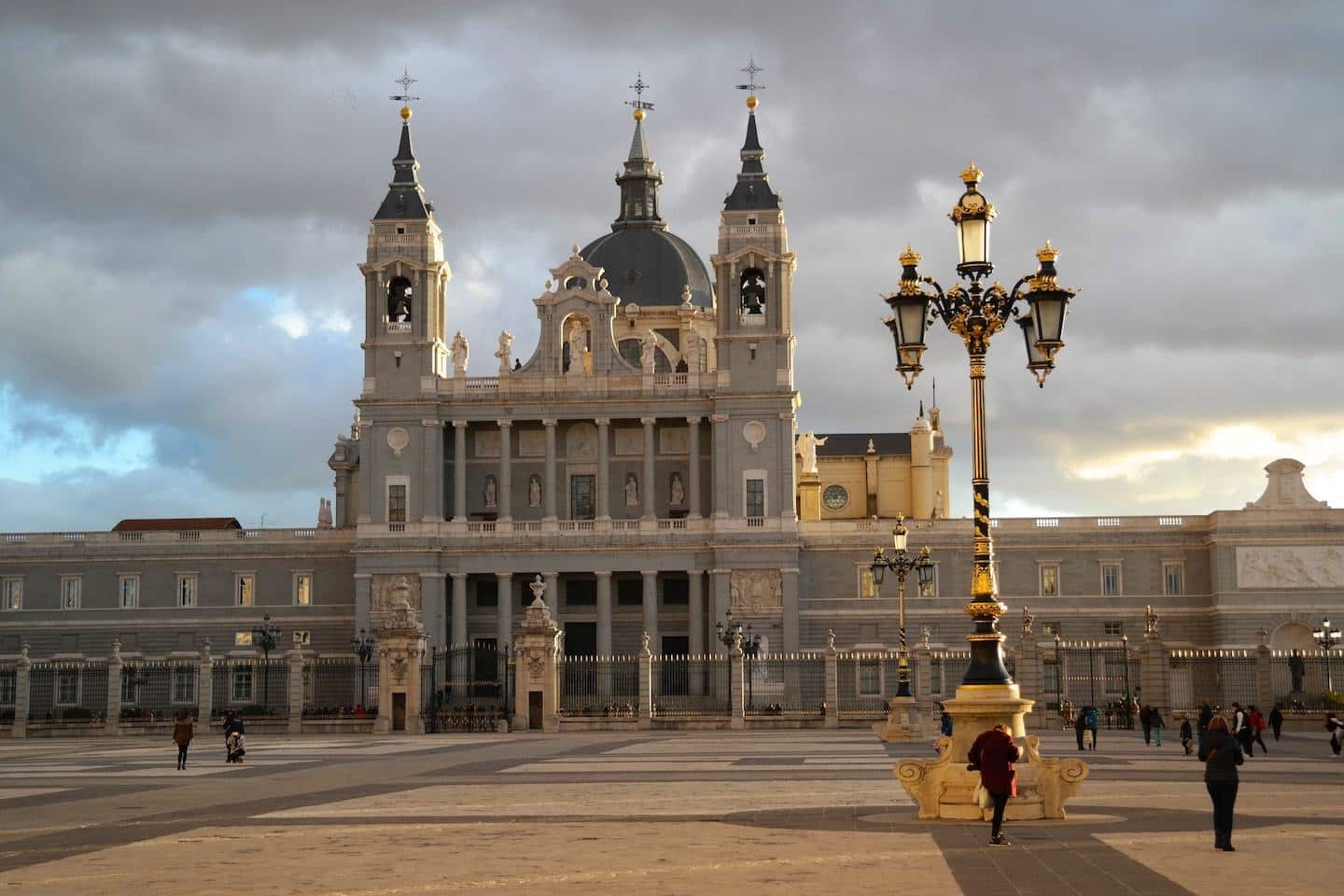
Parque del Oeste
Madrid is well-known for its green spaces, so get some green time in on the lawns of Parque del Oeste.
This large park is in the same area as the Royal Palace, making it a great place for an afternoon picnic and sun basking to rest weary legs.
Parque del Oeste is a particularly special place as it’s home to an ancient Egyptian temple called the Temple of Debod which was donated to Spain by the Egyptian government. Who knew you could get a taste of ancient Egypt in Spain?
Madrid (Day 7)
After your first day of walking around Madrid, you’re probably starting to get a feel for the city’s contagious energy, lively atmosphere, and deep culture dating way far back.
As Madrid is the art and cultural capital of Spain, visiting the museums are a must. Even if you aren’t a huge art buff, the museums in Madrid house world-famous masterpieces that shouldn’t be missed on a trip to the city.
The Madrid art scene is best known for the Golden Triangle of Art, which is made up of the Prado, Reina Sofia, and Thyssen-Bornemisza Museums. To save yourself some money on your museum-hopping day, consider purchasing a combination ticket that grants you access to all three museums!
Besides the Golden Triangle, there are also a few other places to spot art in Madrid which are worth paying a visit to as well.
Prado Museum
The Prado is the most famous museum in Spain — and for good reason.
Hanging within this museum’s walls are more than 7,000 paintings from some of the world’s finest artists. On a visit here, be sure to check out Las Meninas by Velazquez, and the Garden of Earthly Delights by Bosch.
There are also stunning works by El Greco, Rembrandt, Rubens, Caravaggio, Botticelli and Goya! For art history lovers, this is the place to be.
The Prado can get pretty crowded so it’s best to buy tickets online to save you the hassle when you get there. If you’re looking for a way to enjoy the museum on a budget, know that it’s free every Tuesday through Sunday from 5.00pm to 8.00pm.

Reina Sofia Museum
For a dose of a contemporary collection, it doesn’t get much better than the Reina Sofia Museum.
On display you’ll find a boat load of Picasso’s work, complete with more than 100 of his sketches and paintings from throughout his life. This is also the place to find works by Salvador Dali and other mid-19th century contemporary artists!
Thyssen-Bornemisza Museum
The last museum in the Golden Triangle of Art is the one to visit if you love the Masters.
On a gander through the Thyssen-Bornemisza, you’ll encounter works by Van Gogh, Rembrandt, Manet, and Raphael that are instantly recognizable. What’s more, the building holding these paintings runs frequent programing for visitors so be sure to check the schedule on the day of your visit!
National Archaeological Museum
For a museum visit that goes beyond paintings, check out the National Archaeological Museum, with tons of exhibits displaying Spanish treasures that date back more than 2,500 years!
A couple notable things to check out here is the Lady of Elche bust and the Treasure of Guarrazar, which display remarkable detail regardless of how old they are!
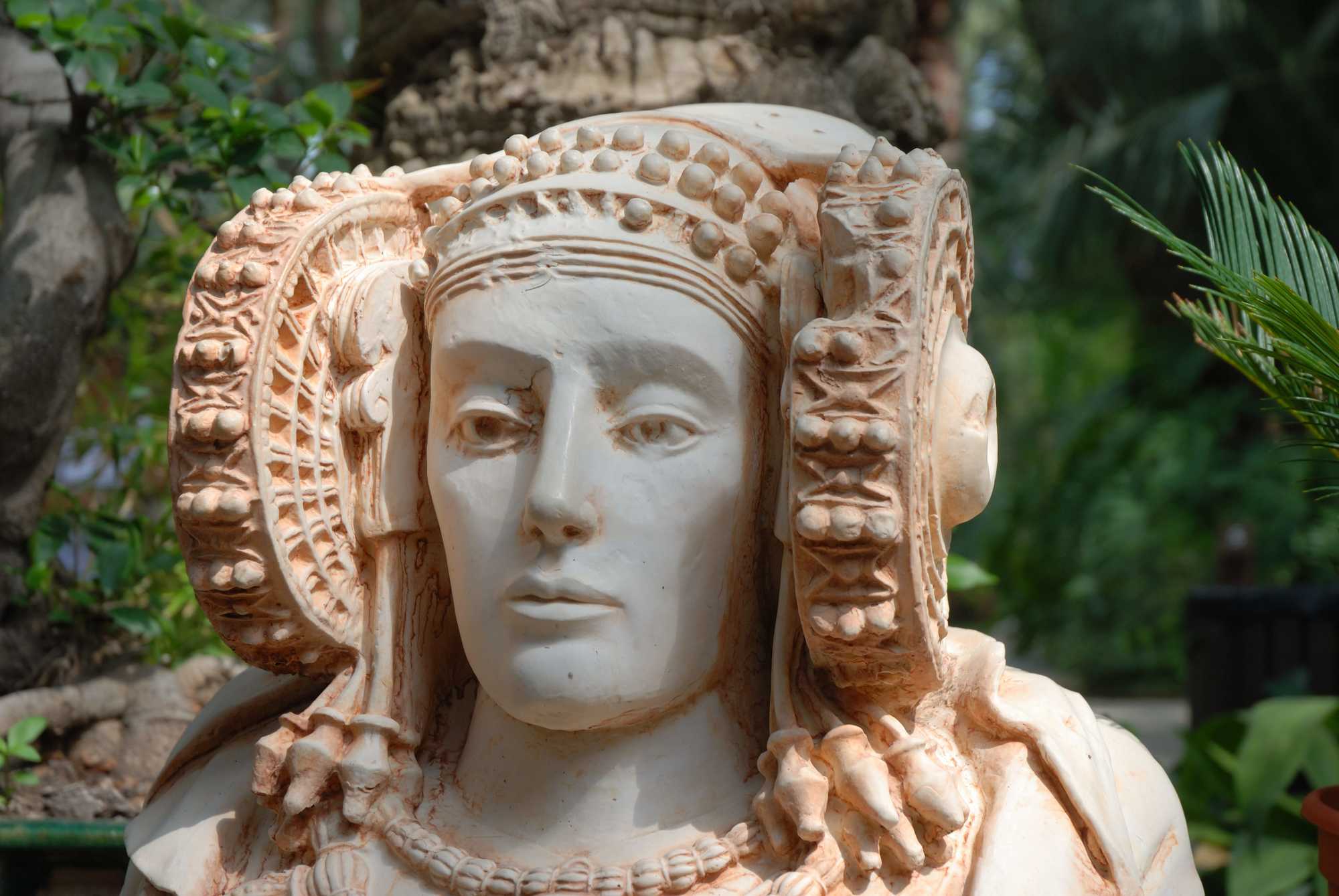
Madrid Street Art
One last way to explore Madrid’s art scene is to immerse yourself in the street art, abundant in neighborhoods like Lavapies, Embajadores, and La Latina, but prevalent throughout the rest of the city as well.
Snap pictures in front of some epic murals and muse at the smaller tags scrawled on Madrid’s walls. This is a great way to enjoy Spanish art when the weather is too nice to be stuck in a museum! The best way to see the most street art is with a guided tour to some of the best spots.
Spanish Nightlife
After spending your entire day in museums, reward yourself with a night out on the town.
Madrid really comes to life after the sun goes down and it’s renowned for having some of the best party scene in all of Spain! Get dressed up to hit a posh club, or dress down for some beers at a laid back local bar.
Whatever you choose, drinking out and about in Madrid will not disappoint!
For more on Madrid: Incredible Things to Do in Madrid | Day Trips from Madrid You Should Add to Your Itinerary | Best Places to Stay in Madrid, Spain | Madrid City Break Guide: The Best of Madrid in 48 Hours
Toledo (Day 8)
You’re halfway through your Spain itinerary!
So you’ve conquered two days in Madrid and are starting to get a feeling for what central Spain is all about. At this point, I bet you’re just itching to see more.
That’s why your eighth day is the perfect time to take a day trip to Toledo.

Getting There: Toledo is super easy to get to from Madrid. Simply catch an AVANT train (operated by Renfe) from Madrid’s Atocha station, and you’ll arrive in Toledo in about 30 minutes. Tickets costs roughly 10 euros and trains generally run every hour or half hour.
An even easier way to get to Toledo for a day trip is to take a guided tour from Madrid. It includes round-trip bus transportation, entry to seven Toledo monuments, and a local guide to show you the best of the city.
Once you arrive in Toledo, you can hit the ground running by exploring the old neighborhoods and immersing yourself in the former Spanish capital. While Madrid holds the culture, Toledo is the place to come for history.
There’s no shortage of monuments, small streets, and interesting things to see at this UNESCO World Heritage Site.
Jewish Quarter
Known as the Town of Three Cultures, Toledo was once home to thriving populations of Jewish people, Catholics, and Muslims all living together in harmony during the Middle Ages.
Evidence of this time still remains with a thriving Jewish Quarter where you can find two towering synagogues, small stone streets, and a public bath from medieval times.
Toledo Cathedral
Representing the Catholic people of Toledo, the city has a sprawling cathedral that is certainly worth paying a visit. The massive spire can be seen from miles away, as can the soaring Gothic architecture that makes up the structure.
Once inside, you’re able to be transported to a time long ago, with the ceilings appearing to reach for the sky and detailed ornaments scattered throughout the tremendous building.
Mosque of Cristo de la Luz
No tour of Toledo is complete without a stop at the Mosque of Cristo de la Luz, an intricate stone building that was once the most impressive mosque in Spain.
It’s the only one out of the ten mosques built during the Moorish period that remains in good condition, so it’s worth visiting for a feel of what things were like in the year 999 when the mosque was built!

El Greco Museum
After exploring all of the diversity Toledo has to offer, you can round out your trip with a little culture.
Take a visit to the El Greco Museum to see some great works by this famous Spanish painter. This museum is especially significant as El Greco spent most of his life in Toledo, and gained a lot of inspiration from this town.
For more on Toledo: Awesome Things to Do in Toledo, Spain
After returning to Madrid from Toledo, it’s time to hit Seville for Day 9 of your Spain itinerary.
Seville (Day 9)
Getting There: Madrid to Seville is quite a lengthy journey and takes about five hours by car. Luckily, the high-speed train will get you there in half the time, roughly two and a half hours, which goes to show how convenient the high-speed rail in Spain is. Trains depart from Atocha station in Madrid and will arrive at Seville’s Santa Justa station, a central location to the rest of the city.
Welcome to Seville: the heart of Andalusia! This city is everything that you’d expect from Spain: romantic, passionate, and full of flamenco dancers… Does it get any better than that?
There’s plenty to do in Seville to keep up with your bustling vacation, so you better prepare to wake up early and go to sleep late to take in as much of this city as possible.
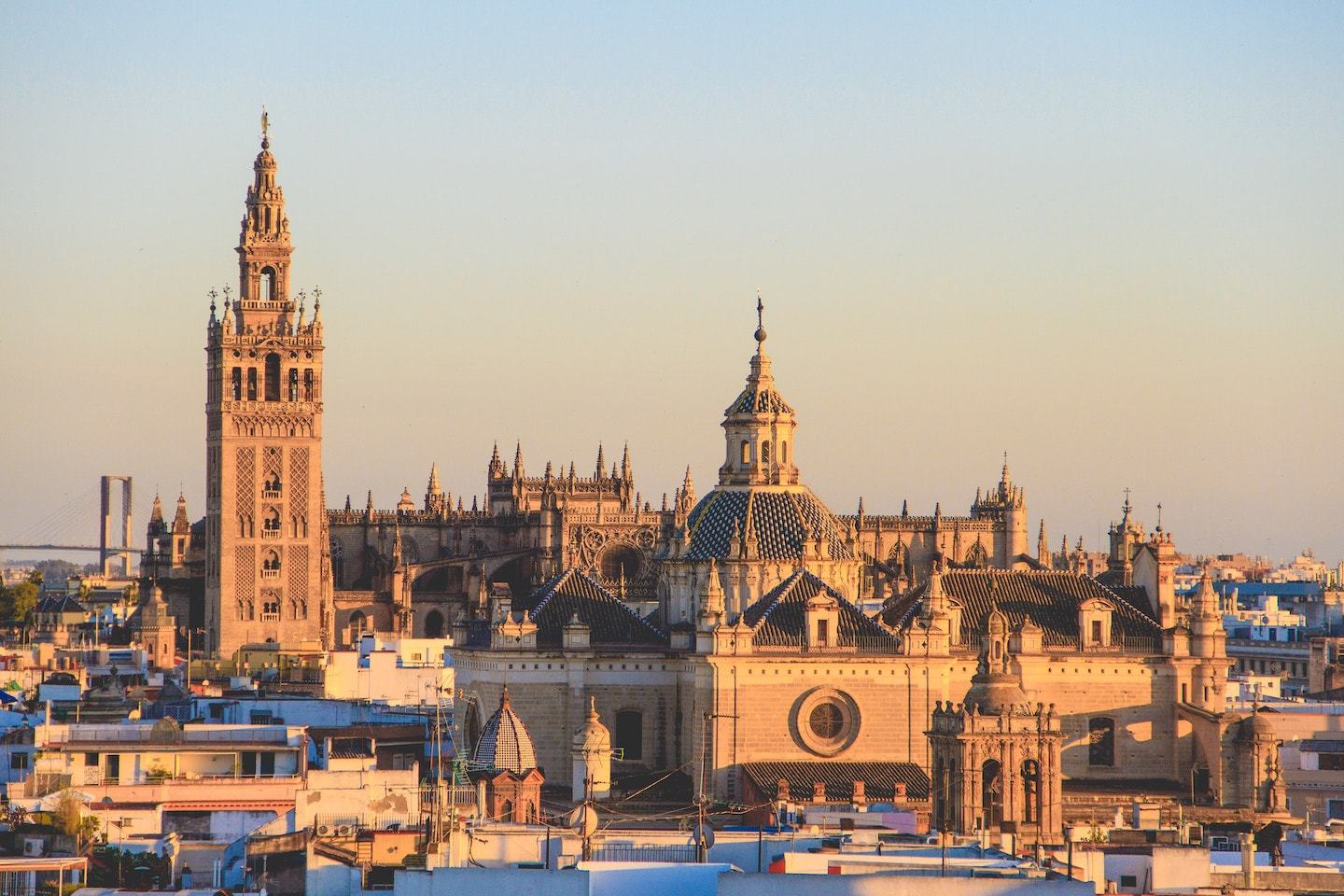
Real Alcazar
The Alcazar in Seville is truly the showstopper when it comes to this incredible city, and it’s likely you’ll be itching to pay it a visit as soon as you arrive.
The Alcazar is without a doubt one of the most beautiful palaces in the entire country, with an iconic look that mixes both Spanish and Moorish elements to create what stands today. Built by the Moorish Muslim Kings, you’re transported as soon as you step into the compound by the overly detailed carving work, the lush greenery and tranquil pools throughout.
The Alcazar is better known today as the Water Gardens of Dorne in Game of Thrones, making this popular place an even hotter tourist attraction.
Insider Tip: Buying tickets in advance is an absolute must to visit the Alcazar. Even better, purchase tickets that allow you to skip the line, otherwise you could end up waiting hours for entry!
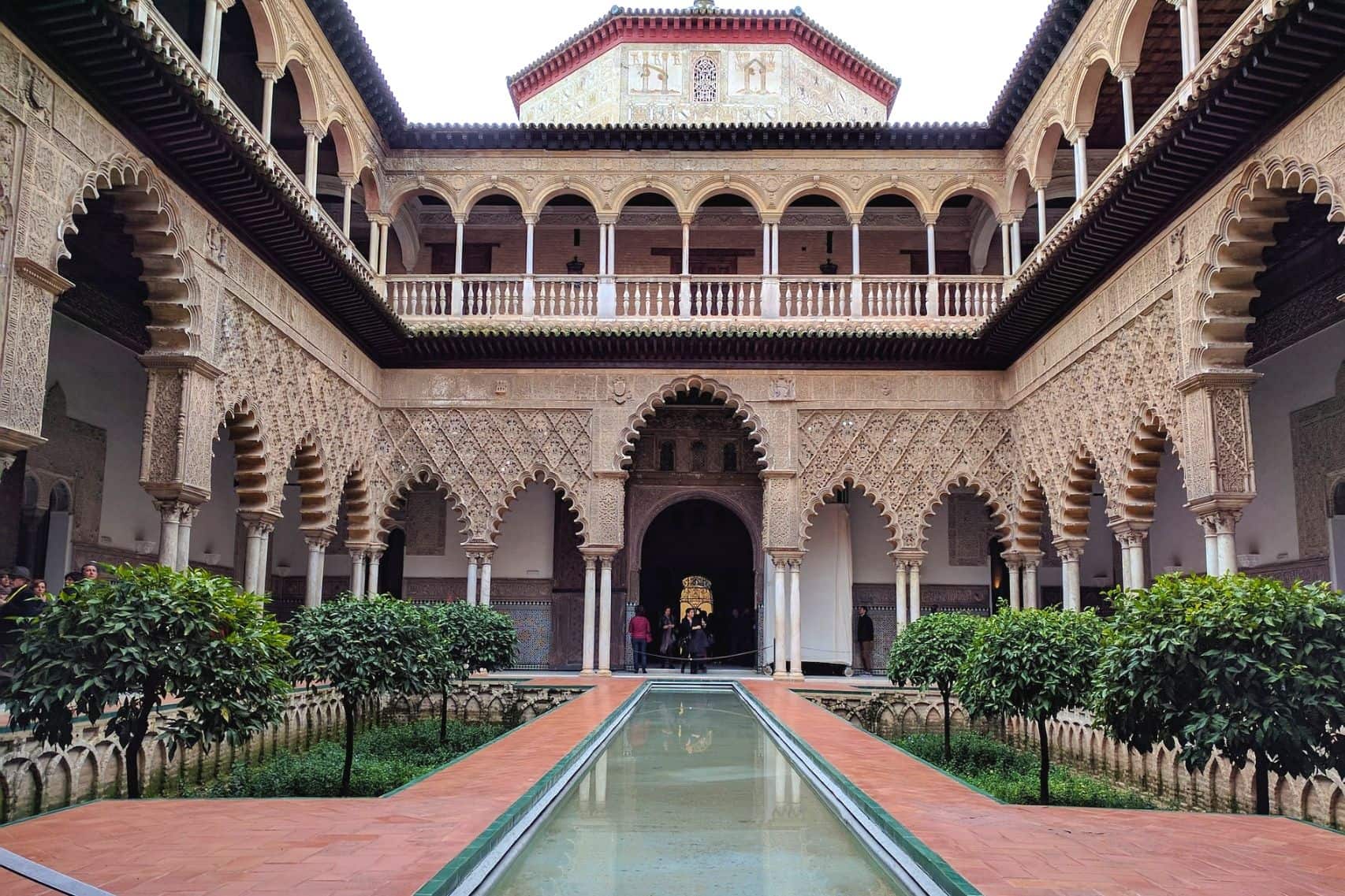
Seville Cathedral
Like with most other Spanish cities, the cathedral is pretty much the centerpiece of the area.
Standing tall above surrounding buildings, this Gothic structure was actually once a mosque before being turned into a church – now, it’s the third largest church in the world! It’s filled with Moorish elements, including paintings, sculptures and other artifacts, but once inside, you’re unmistakably in a place of Catholic worship.
Pay the cathedral a visit to see what I’m talking about for yourself!
La Giralda
While hanging around the Cathedral, a climb to the top of the La Giralda Bell Tower is a must for unparalleled views of the city.
The climb up may be a bit tough, but you’ll be surrounded by this giant Moorish structure the entire time. There are intricate details throughout the tower, as well as a decent-sized fountain guarding the entrance.
This is a great time to imagine the blending of both Moorish and Catholic influence to leave you with the structure that’s standing today!
Parque de Maria Luisa
After walking (and waiting in line) all day, head to Parque de Maria Luisa for the perfect oasis from the city.
Besides having open green spaces, this lovely park has plenty of manicured hedges, scattered sculptures and the most pristine bodies of water you’ve ever seen. There are towering palm trees spread throughout the park and well kept pathways for wandering.
Read More: Top Things to Do in Seville on a Day Trip
Seville (Day 10)
For your second day in Seville, break away from the tourist path and enjoy exploring local neighborhoods that offer each visitor something special.
Plus, many of Seville’s neighborhoods are picture perfect, creating the ideal setting for your next Instagram pic!
Santa Cruz Neighborhood
The Santa Cruz Barrio came to life during the reign of Ferdinand III in the mid-1200s. It was the area in which Seville’s Jewish people were confined and the entire neighborhood grew from there, becoming the colorful paradise it is today.
Spend some time wandering aimlessly through the narrow, car-free streets, coming across the occasional former palace, old church, or abandoned city square. Immerse yourself in the yellow, white and red-detailed walls, with pointed windows looking out on the world below.
Seriously, this is a lovely neighborhood to spend an hour, a morning, or an entire day exploring!
Insider Tip: Stop by Calle Mateos Gago, which is the premier street for feasting on tapas in Santa Cruz.
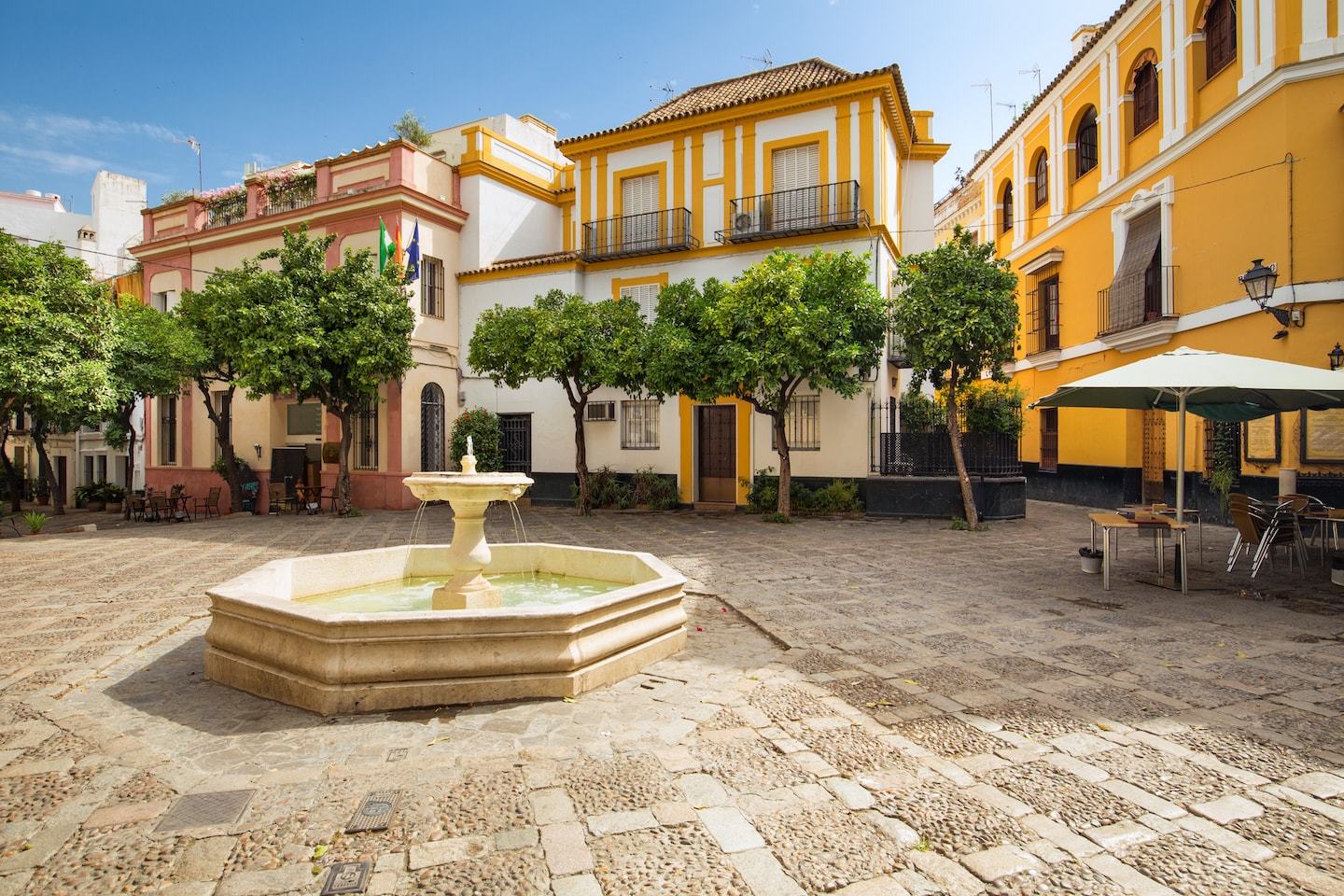
Triana Neighborhood
The Old Quarter of Seville is confined to the vibrant neighborhood of Triana. It’s just next to the Guadalquivir River and accessible to the rest of the city by the unmissable bridge, Puente de Triana.
While this neighborhood was once heavily inhabited by Seville’s gypsy population, it’s now a charming place to spend a day strolling, eating, and shopping. Triana is certainly the most colorful place in Seville, with bright storefronts and vibrant homes lining the small streets.
This is one of the best places to catch a flamenco show and discover local Spanish tile and pottery as well. Be sure to stop by Mercado de Triana for local treats and Ceramica Santa Ana to discover a local pottery factory.
If you’re looking for a drink with a view, give Calle Betis ago. You’ll find tons of restaurants and bars along the waterfront, waiting to be enjoyed.
Las Setas
Sitting right in the center of Seville is one of the largest wooden structures in the world: Las Setas.
Las Setas is a giant structure resembling a mushroom. Its interior houses a museum, marketplace, and a public park. This is one of the best places in Seville to catch a sunset, as well as offering an outstanding view of the city!
Plaza de España
Okay, so many of the big cities in Spain have a Plaza de España, but Seville’s is really something special.
Built in 1929, it has some wild Spanish architecture that certainly cannot be missed. There are tons of bridges throughout the plaza, with 48 pavilions to be visited as well. One of the most noteworthy attractions in the plaza is the archaeology museum and the Maria Luisa Park nearby.
For one of the most beautiful squares in Spain, and possibly the entire world, gander through Plaza de España and see it for yourself!
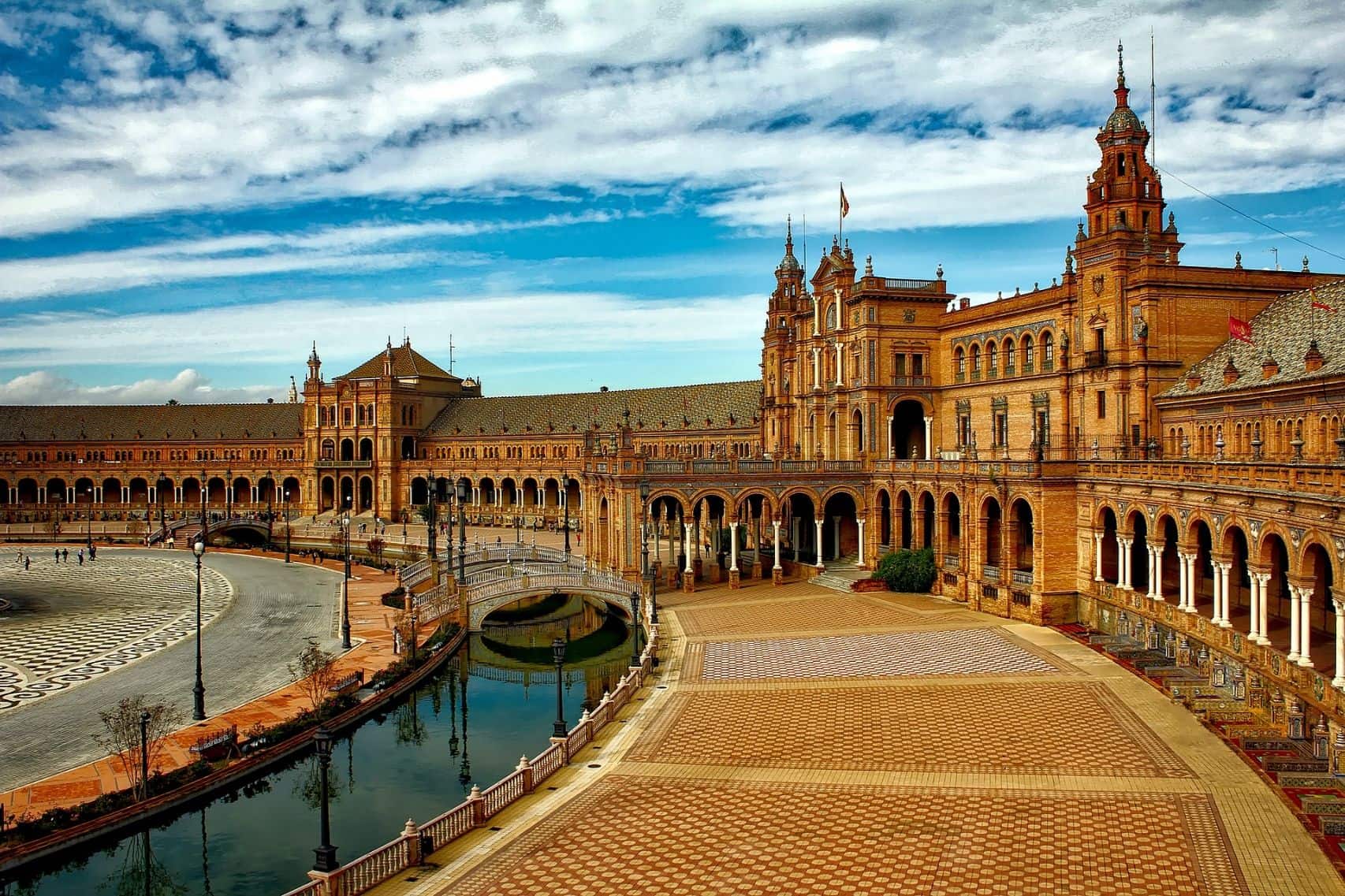
Dinner and a Show
After a jam-packed two days of exploring Seville, there’s no better way to end your few days here than with a tapas dinner and a side of flamenco! There are plenty of places that offer eager visitors an entertaining flamenco show while they dine on Spanish cuisine and sip on sangria.
Alternatively, opt for purchase tickets that allow you to skip the line! You can read all about our experience here.
Cordoba (Day 11)
After exploring Seville to its fullest, head to Cordoba for a quick day trip to see some more of Andalusia. It’s small, so a single day is the perfect amount of time to soak up all this little city has to offer.
Getting There: Cordoba is a quick 45-minute high-speed train ride away from Seville, making it the perfect destination for a day of exploration. Alternatively, you can take a bus which takes about 2 hours and 15 minutes to reach Cordoba from Seville, and may be a bit cheaper than taking the train.
To make the most of your day trip, it may be worth it to take a guided tour. Guided tours are quite common from Seville to Cordoba. It will typically include transportation via air-conditioned coach, a professional tour guide to bring you to all of the spots, and entrance to some of Cordoba’s best attractions.
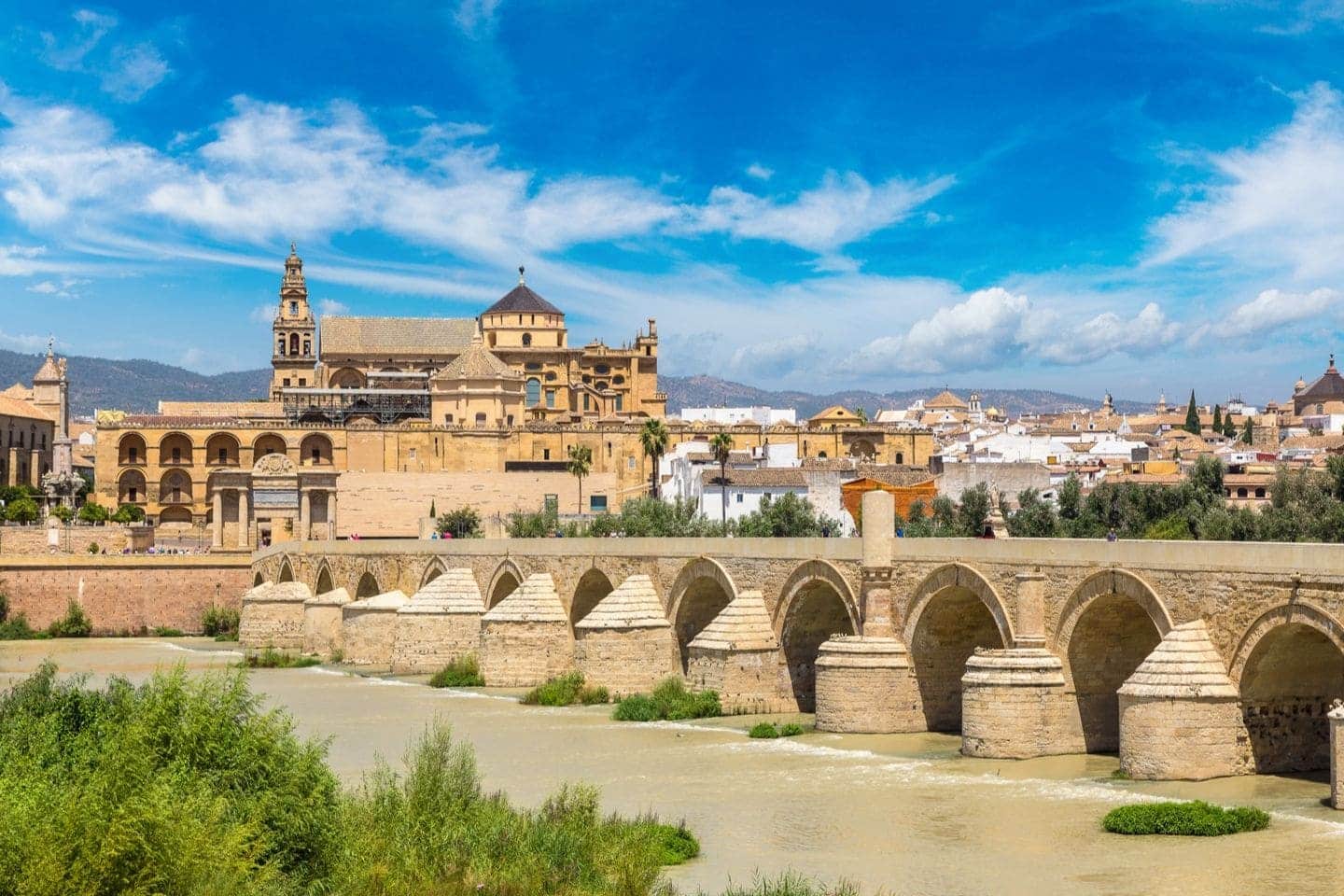
Mezquita-Cathedral
The most famous and beautiful place to visit in Cordoba is the Mezquita-Cathedral, built in 785 AD. The Mezquita is one of the largest mosques in the world, and has some of the most astounding details of any place you’ve ever seen.
First a church, this mosque still retains many of the features associated with a Catholic house of worship. That being said, there are stark Moorish influences that have created the atmosphere that stands today. The Islamic art is out of this world, and the blend of Christian and Moorish architecture is unlike anything you’ve ever seen before.
Enjoy wandering the Great Hall and soaking in all the opulence, and snapping pictures under the famed stone arches. Don’t forget to also make it to the Patio de Los Naranjos courtyard and the Bell Tower, too!
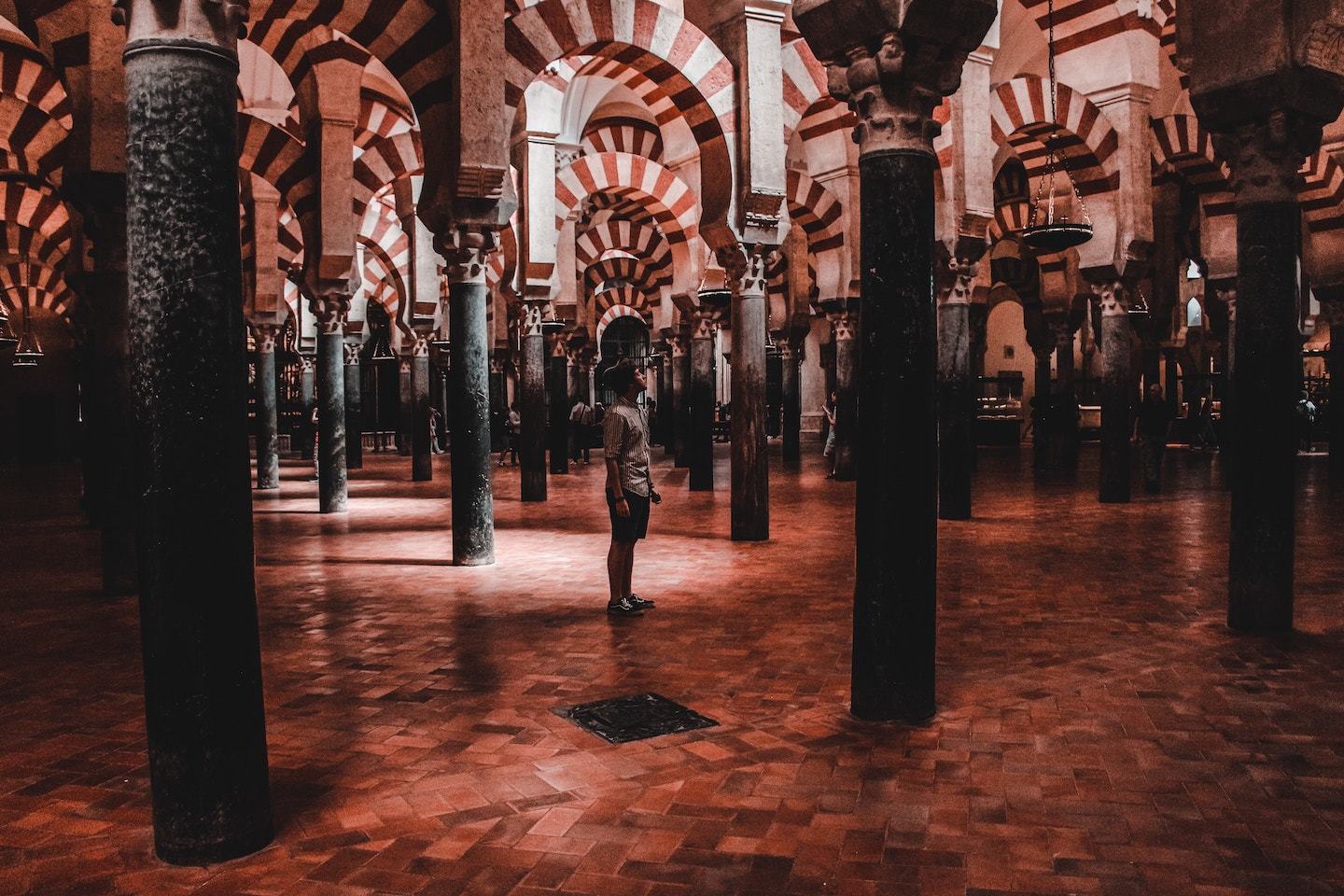
Alcazar de Los Reyes Cristianos
Like many great Spanish cities, Cordoba is complete with an Alcazar, or medieval palace, that sits right in the historic center of town near the Mezquita.
Once a residence for Spanish Catholic kings, this Alcazar was the headquarters for the Holy Office during the Spanish Inquisition. The Main Tower is even known as the Tower of Inquisition!
Besides the dark past of this place, it’s a beautiful spot to visit, with magnificent gardens surrounded by the four castle towers. There are large paths lined by cypress trees and some of the most beautiful fountains imaginable.
Be sure to visit the Hall of Mosaics to see the beautiful tile artwork covering the wall, and stop by the royal baths and the courtyards as well.
Jewish Quarter
It must be evident by now but Jewish history is rampant throughout Spain, and is a large part of the country’s history. The Cordoba Jewish Quarter is a splendid place to visit, especially if you’re a history lover.
Designated a UNESCO World Heritage Site, the entire district is full of historic monuments that were at the heart of the Inquisition. You’ll find tons of shops in this area, and narrow streets that are perfect for getting lost in.
You’ll be reminded of the past throughout your wandering by statues and plaques, so be sure to give them a quick read to understand the history of the streets you’re walking today!
Cordoba Synagogue
Obviously religion is a central part of Cordoba, so a stop at the only remaining Jewish Synagogue in Andalusia should definitely be a part of your tour.
The Cordoba Synagogue is one of the best-preserved houses of worship remaining in Spain. It’s a small house of worship, but beautiful nonetheless. After the Jews were removed from Spain during the Inquisition, the Synagogue was used as a hospital and a school before being recognized as a national monument in the 19th century.
While visiting, keep your eyes peeled for Hebrew inscriptions along the walls and the other intricate carvings throughout the place.
Calleja de las Flores
If you’re looking for more than history on your day trip to Cordoba, spend some time walking along this street in the Old Quarter. There are tons of patios to sit on and enjoy a coffee, and the entire street is lined with gorgeous flowers.
It’s no wonder such a beautiful place attracts so many tourists!
Insider Tip: To avoid the crowds, either visit Calleja de las Flores early in the morning or later in the afternoon or evening.
Read More: Things to Do on a Cordoba Day Trip | Amazing Things to Do in Córdoba
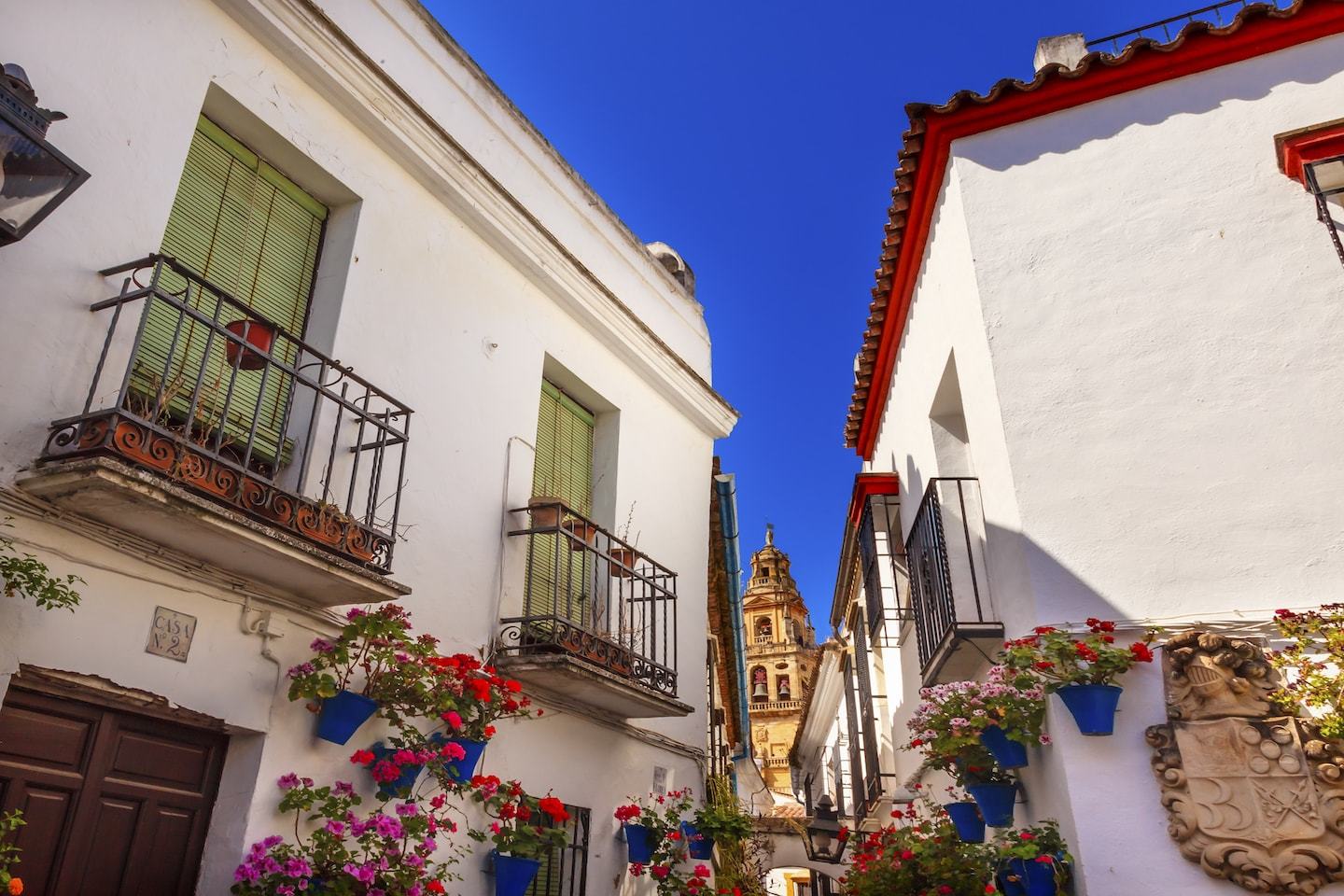
Granada (Day 12)
Before returning to Madrid for your last couple of days in Spain, head to Granada for one last Andalusian city on your epic Spain trip.
Getting There: Like most of your Spanish travel, taking a train between Seville and Granada is a foolproof way to get from one city to the other. The journey takes four hours, and leaves from Seville’s Santa Justa station. You can also take a bus from Seville’s Prado Bus Station, which is only three hours of travel and costs less as well.
Granada is another charming Andalusian city that will sweep you off your feet with its medieval atmosphere and mountainous surroundings.
While a single day isn’t enough time to see absolutely everything, it is adequate for getting you well-acquainted with the place and bringing you to all the main sights.
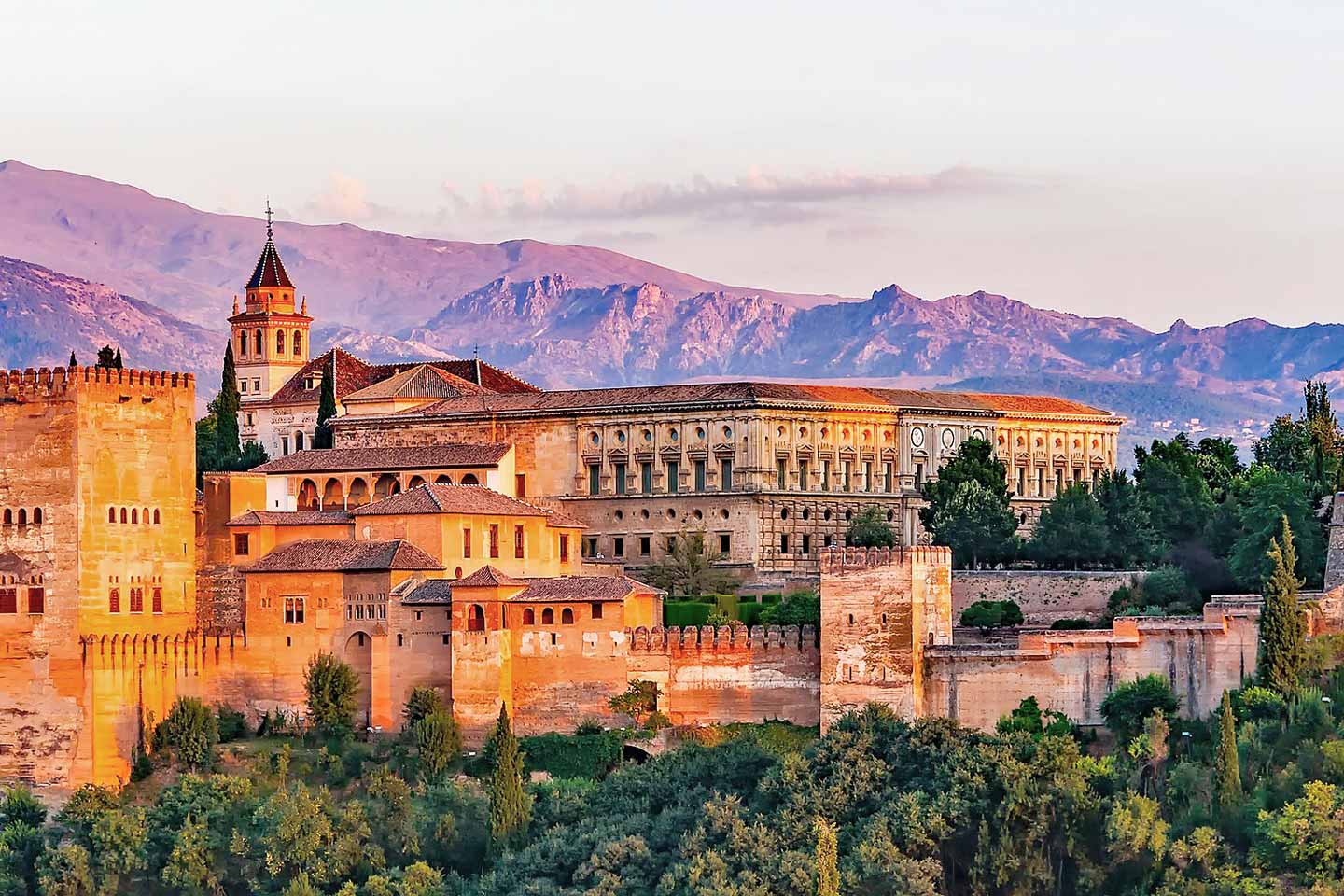
Alhambra
The centerpiece of Granada, the Alhambra is top of the list when it comes to places to visit in Granada.
It’s an absolutely giant fortress that was built more than 700 years ago and has become the shining star of Islam, Christianity, and Europe as a whole. It’s an astounding monument that will sweep you off your feet as soon as you enter the sprawling grounds.
From the Alhambra, you have lovely city views with a snow-capped mountain backdrop to round things out.
While wandering around the fortress, there are some must-visit places:
- The Alcazaba is the oldest part of the fortress; the first references to this part of the Alhambra dates back to the 9th century! In these military grounds, you’ll find three towers: The Broken Tower, the Keep and the Watch Tower, creating a real fortress within the already giant compound.
- The Nasrid Palaces were designed in an Islamic style, full of reflecting pools, large columns, and ornate details carved into and hanging from the ceiling.
- Generalife is the star of the Alhambra’s gardens. There’s an upper and lower garden, as well as tons of fountains, perfectly manicured hedges, and terraces that offer a panoramic view of the entire city below. Walking through Generalife will make you feel like Spanish royalty, that’s for sure!
To really get a deeper understanding of its history (and skip the long lines while you’re at it!), consider taking a guided tour of Alhambra.
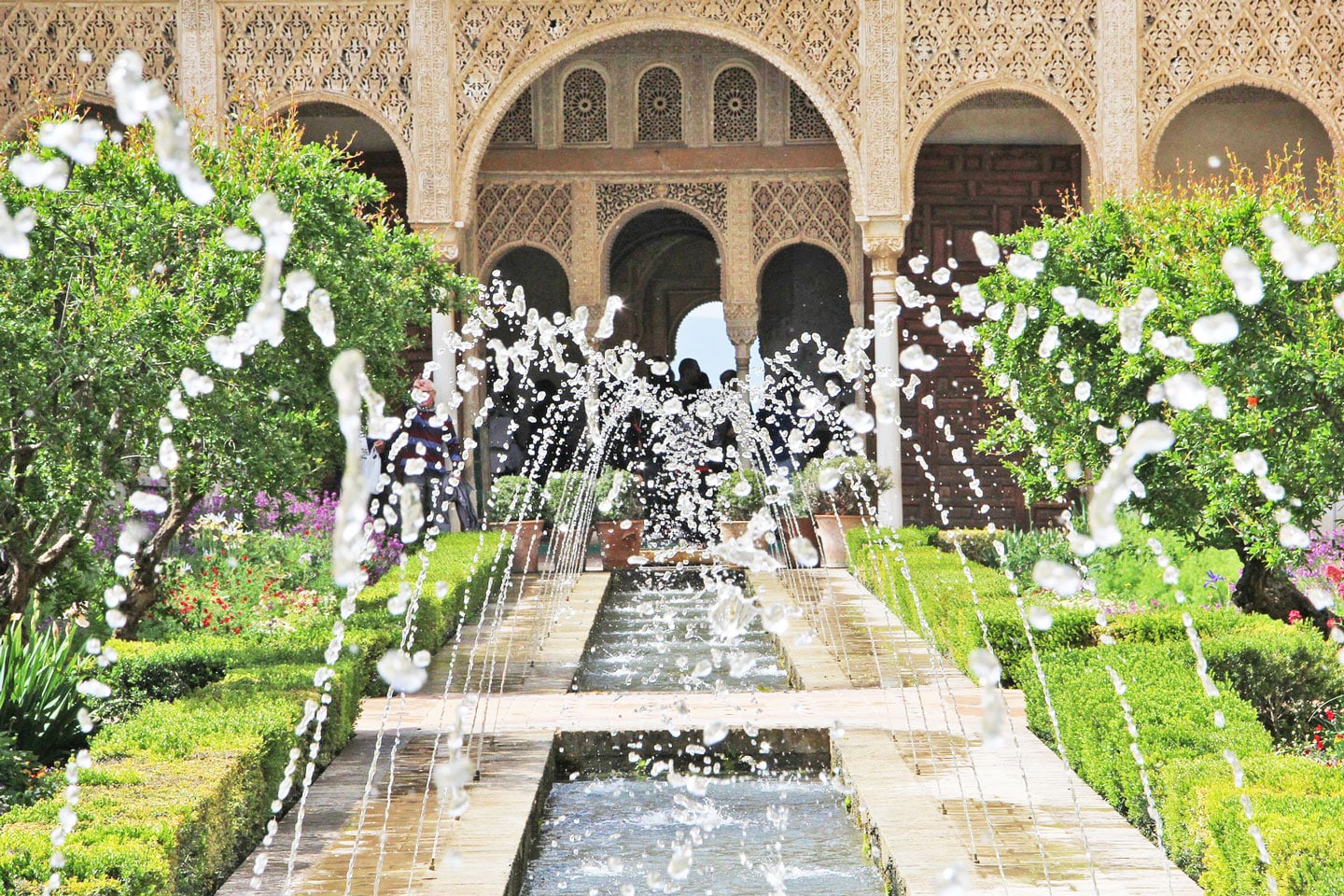
Granada Cathedral
No visit to Granada would be complete without a stop at the city’s cathedral. This giant Roman Catholic house of worship was completed in 1561, after more than 180 years of construction.
Once inside, it’s evident why it took so long to build this absurdly detailed structure, as the unique architecture is a real standout, especially in the realm of Spanish cathedrals. There’s a mishmash of styles here, which is evident from the Gothic foundation with the rest of the building closely resembling construction during the Italian Renaissance.
Besides the design, the entire place is filled with art, from the beautiful stained glass pieces and the paintings to sculptures that dot the large dome.
Royal Chapel
Connected to the Cathedral is the Royal Chapel, which also serves as the resting place for Queen Isabella I of Castile and King Ferdinand II of Aragon.
The Chapel is connected to the cathedral via a “gothic portal” which carefully depicts the style of the time. With wide open eyes, you’re able to see religious scenes carved into the columns, as well as historic Spanish figures dotting the lined hallway.
Alcaiceria (The Great Bazaar)
For Arab crafts, unique souvenirs, and small trinkets from Granada, the Great Bazaar is the best place to explore. The entire area is filled with stalls crammed with handmade goods and sold by those eager to earn a living. You can find things like handmade wooden furniture and games, ethnic clothing, and exotic spices to bring back for family and friends.
There’s a deep history behind the Alcaiceria. It once held more than 200 shops in a wide maze of streets. Today, only a fraction of the original marketplace remains, but it’s the perfect place for a taste of a time long ago.
Insider Tip: Be extra mindful of your belongings on a visit to Alcaiceria as it’s a place frequented by pickpockets and gypsies.
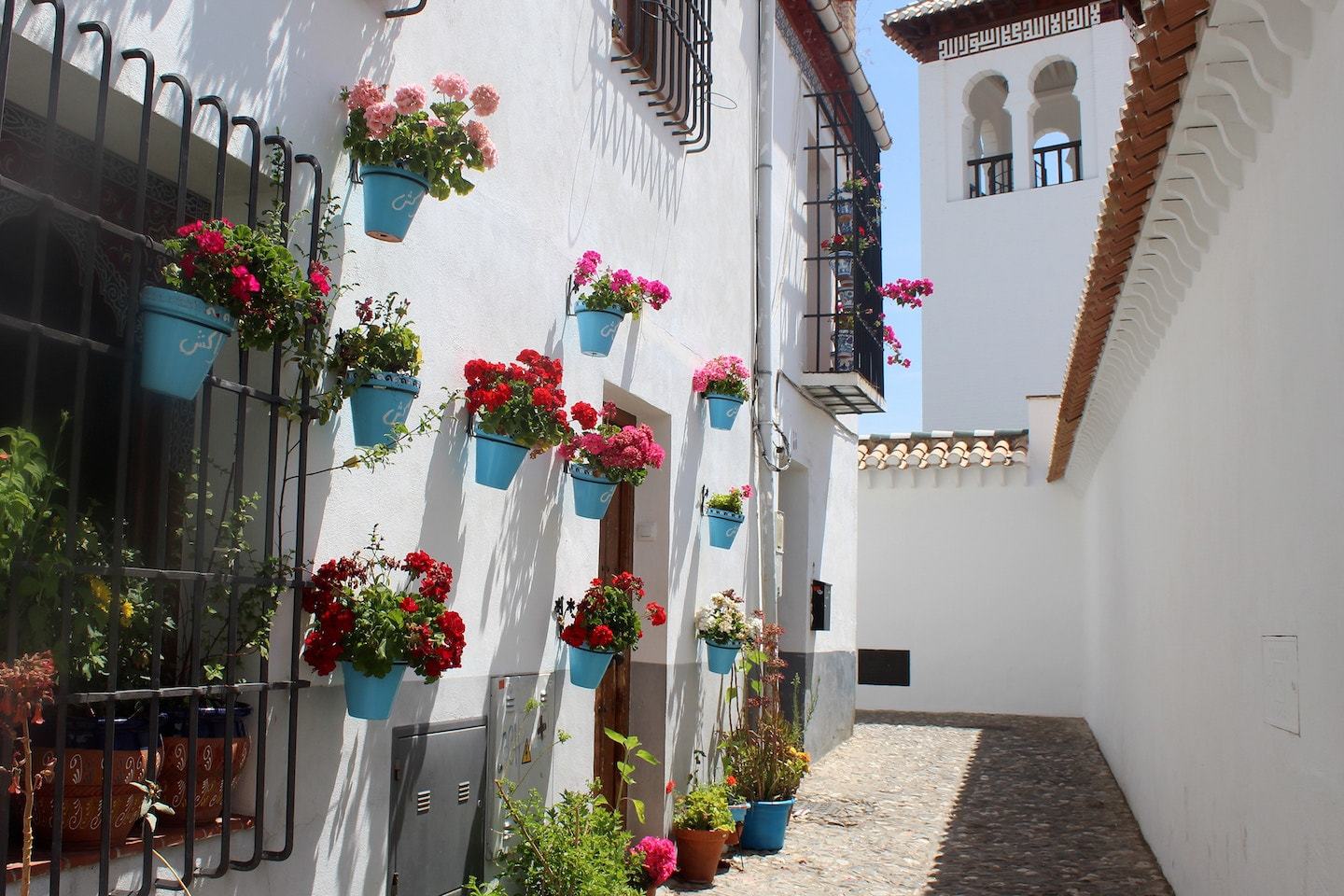
Albaicin Neighborhood
One last place to visit on your tour of Granada is the white-walled, brown-roofed neighborhood of Albaicin.
Besides the color of the houses and storefronts, this district is best known for its winding streets and medieval Moorish past. It’s been declared a World Heritage Site, and there are several spots that provide visitors with picturesque views of the surroundings.
There’s a lot to see in Albaicin, so here are some standout places to get you started:
- The Church of San Salvador has been around since the 16th century and has these gorgeous horseshoe arches and high Arab ceilings. The entire church is designed in a crazy unique style, so it’s a great place to get a bit of the past with an interesting twist.
- Church of San Nicolas is where you want to go for the views. It’s a pretty steep hike to the stop, but once you get there, it has one of the best views of the Alhambra in the whole of Granada. Feast your eyes on the massive fortress set against the snowy Sierra Nevadas. It’s a true scene out of a painting!
- Carrera Del Darro allows you to break away from the religious aspect of the area and enjoy some modern indulgences. This street is one of the oldest in the neighborhood and runs right along the river. It’s a great place to spot Moorish architecture, enjoy street performers, lounge about at a cafe, or snack on some tapas.
Madrid (Day 13)
After exploring a great deal of the country, it’s time to return to Spain’s capital, Madrid, for your last few days before heading home.
Getting There: Unfortunately, there are no high-speed AVE trains that run between Madrid and Granada.
While it’s still possible to take a train, it’s actually quicker and much less expensive to take a bus. Buses run regularly between the two cities and the journey takes four to six hours.
Spanish Inquisition Walking Tour
After seeing a great deal of Spain, one can only expect that the Inquisition has come up more than once. A vital time in Spanish history, learning about the Inquisition is one of the best ways to understand the country’s troubled past and hopeful future.
Taking a Spanish Inquisition walking tour around Madrid is a great way to hear the full story, as well as see important sites from that period. As it’s so important and you’ve just spent nearly two weeks in Spain, learning a thing or two could prove more interesting than you’d think!
Mercado San Miguel
For more lighthearted fun, head over to Mercado San Miguel, the most popular food market in Madrid.
Here, you’ll find endless amounts of Spanish delicacies and treats — a perfect way to kill an afternoon wandering from stall to stall. Be sure to have bites of paella, grilled shrimp, shaved yam, and of course a few glasses of Spanish wine.
Just a warning: it’s hard to leave this heavenly place once you see all it has to offer!
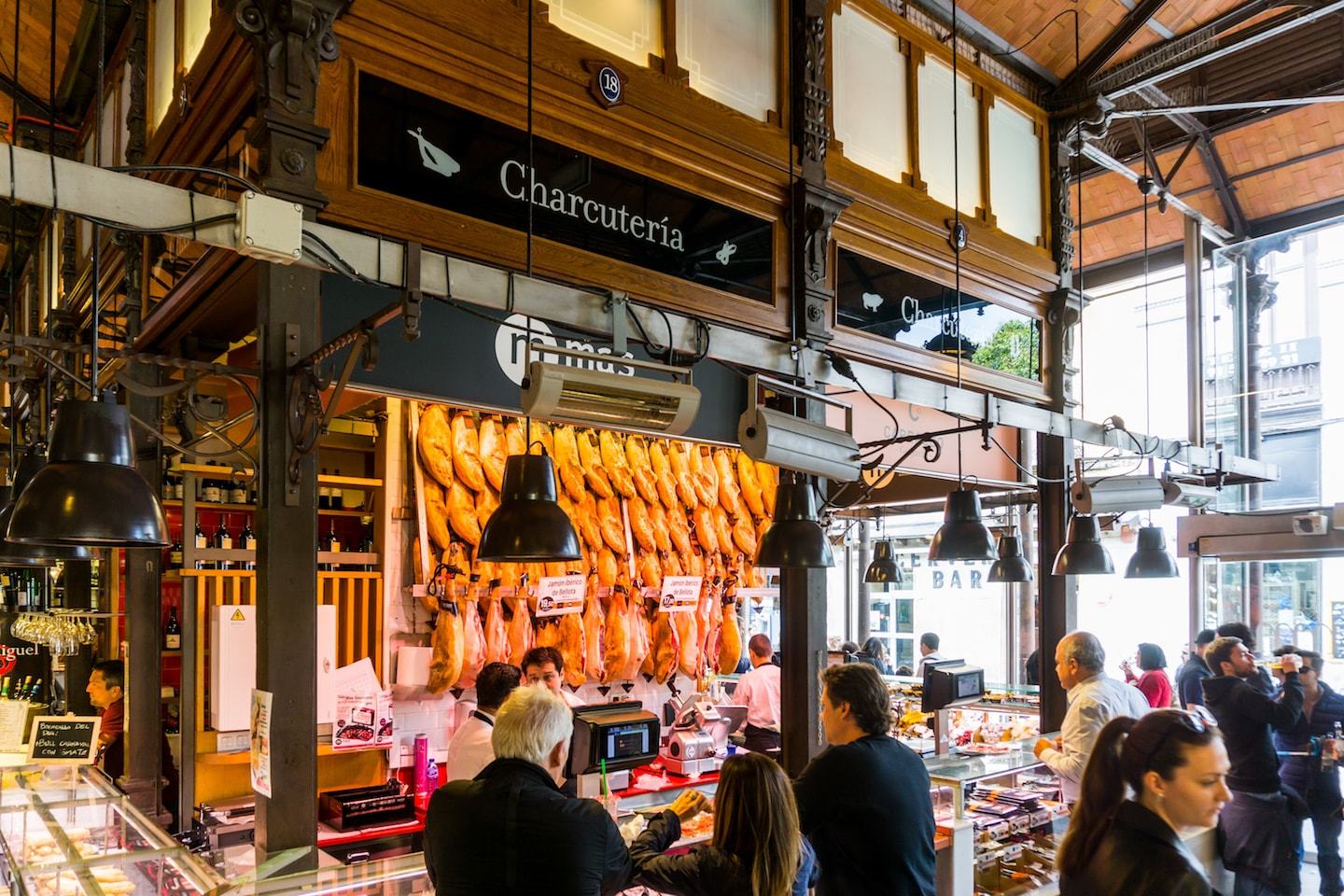
Las Rosas
If you prefer shopping for clothing, shoes, and handbags, you may want to skip the market and spend the afternoon at Las Rosas, Madrid’s premiere discount shopping village.
Here you’ll find more than 100 storefronts, most of which boast designer names like Gucci and Bulgari. The best part about spending at Las Rosas is that nearly everything is on sale for up to 60% off!
Plus, if you’re from outside of the EU, your purchases are tax-free! Does that sound like Spanish heaven, or what?
Pub Crawl
Experiencing Madrid’s nightlife to the fullest is a must before taking off.
There’s no better way to hit all of the best spots than with a pub crawl! Meet up with other travelers and locals who are eager to travel from bar to pub to nightclub, sipping on drinks and socializing with others.
Madrid (Day 14)
To wrap up your Spain trip, there are two special places left to visit before taking off from Madrid.
El Retiro Park
One of the most luxurious parks in Madrid and possibly in all of Spain, El Retiro sits right in the middle of the city.
Made up of grassy meadows, old and tall trees, and a giant lake to bask next to, it’s the ideal place for a picnic of tapas and cured meats. Retiro is undeniably one of the best oasis Madrid could offer visitors and locals alike.

There’s plenty to see in the park, besides just the fresh bursts of nature. Be on the lookout for the following:
- A quick walk from the lake, The Crystal Palace is a gorgeous glass structure with thrilling luminescence during daytime and at night. When the sun shines through the glass, it’s refracted to create hundreds of rainbows dancing about the hall. At night, it’s a glowing beacon sitting at the foot of water. It’s one of the most lovely places in all of Madrid, and is truly remarkable to anyone who visits it.
- Velazquez Palace is another large structure in the park that was designed by the same architect as the Crystal Palace. Made of steel and glass, the interior of the building is often flooded with light, which is why it’s the perfect place for the occasional temporary exhibition put on in the space by the Reina Sofia Museum.
- The Lake has already been mentioned, but it’s worth bringing it up again to say that you can rent a rowboat to paddle around the water on a nice afternoon. There are also tons of grouper fish swimming about which gladly accept bread thrown in by park visitors.
- Jardines de Cecilio Rodriguez is perhaps the most unique spot in the park as they’re enclosed gardens which are home to peacocks! Did you know that they can fly? Keep your eyes out as they soar off of branches to the garden below.
- Paseo de la Argentina, or the Statue Walk, is a final place that should be walked through on your visit to Retiro Park. The entire path is lined with statues from the 18th century depicting past Spanish royalty.
Faro de Moncloa
A last, but certainly not least, place to visit on your last day in Madrid is Faro de Moncloa for unforgettable views of the city.
This spot is a giant, 92-meter tower from which you can enjoy panoramic views of Madrid and the most famous monuments poking out from the rest of the city’s density.
From the top, you’ll be able to view the Royal Palace and financial center. On the clearest days, you can even see the mountains far off in the distance! Visit at sunset for an unreal view, or really any time to take a final look at beautiful Spain below you.
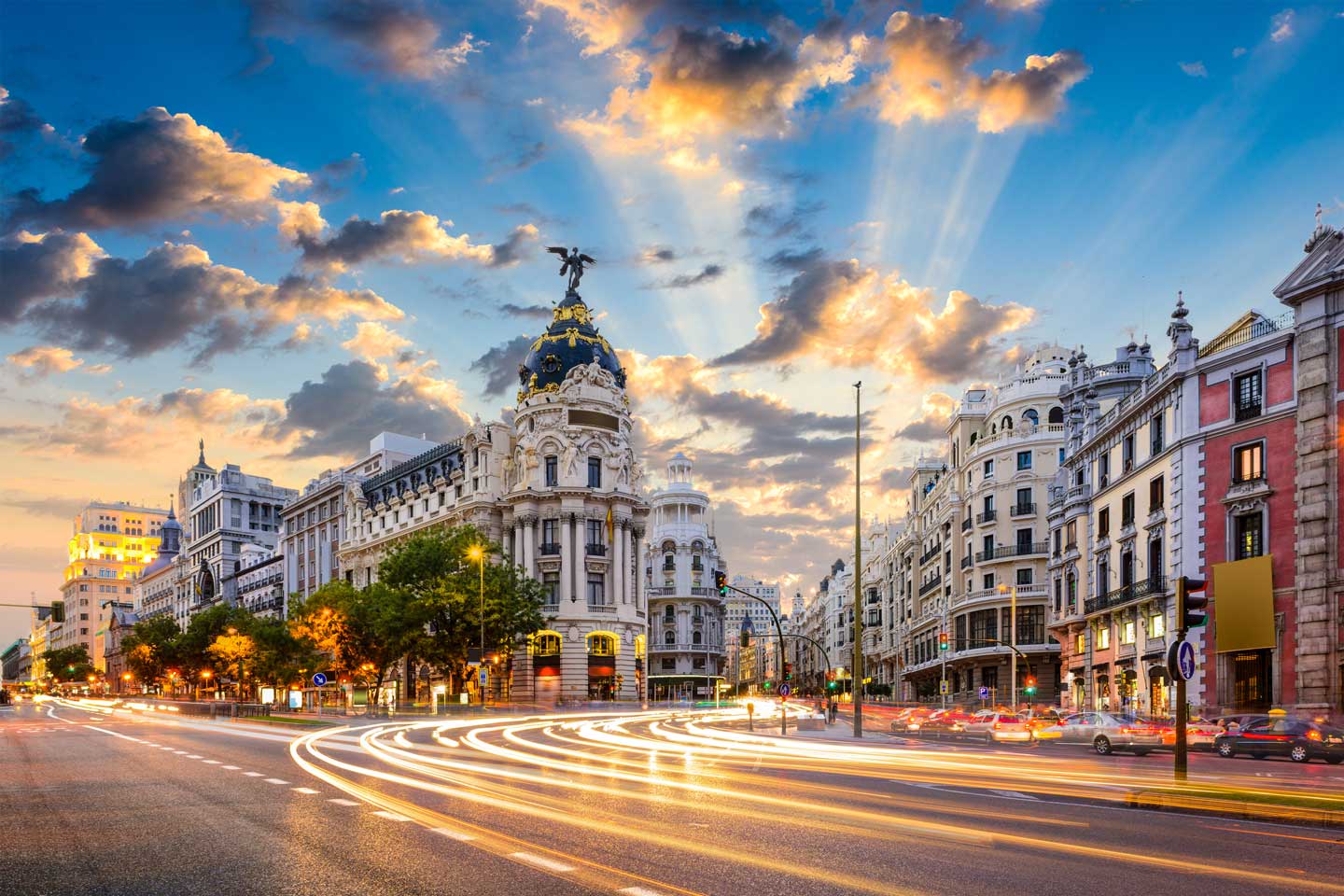
After finally getting through this Spain itinerary, you may realize that the number of places to visit, things to see, and tapas to eat can be overwhelming when planning a trip to Spain.
Making sure you hit all the right spots without missing anything particularly noteworthy can be challenging, but as long as you know what’s out there, you have the tools to see Spain successfully.
Hopefully, this Spain itinerary has given you a good idea of a route to take and things to do along the way, as well as inspire you to get out and see more than just what’s on the tourist brochures.
Beyond this list, there are many fab places to visit including Frigiliana, Tarifa, and much more!
Spain is such a tremendously beautiful country, with so much to offer those eager to learn the history and soak in the culture and tradition.
If you’re traveling there any time soon, enjoy yourself! It’s a most magical place.
Need more help planning your trip? Check these out
Inspired? Pin It!
